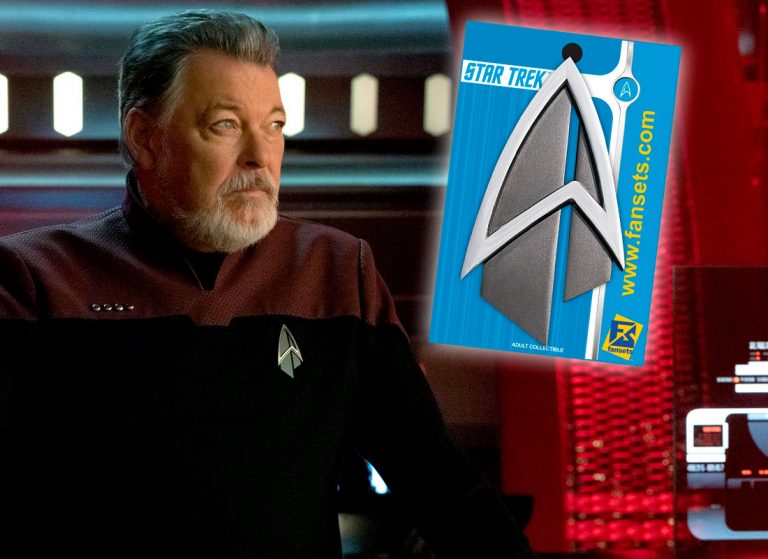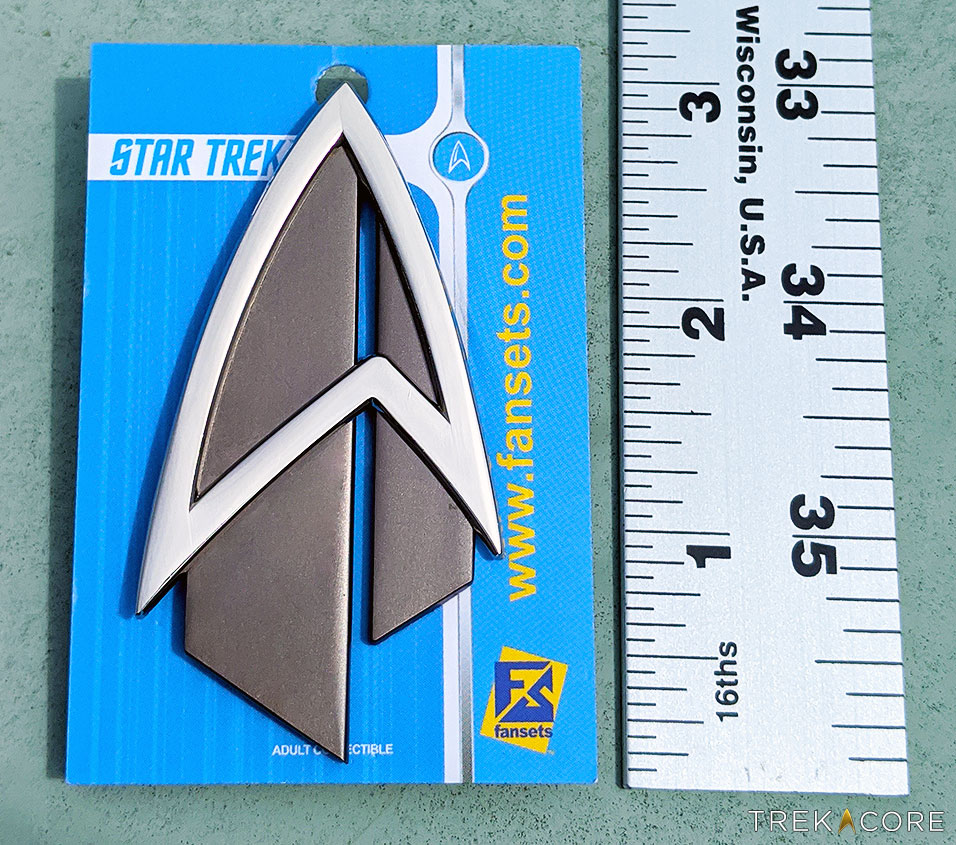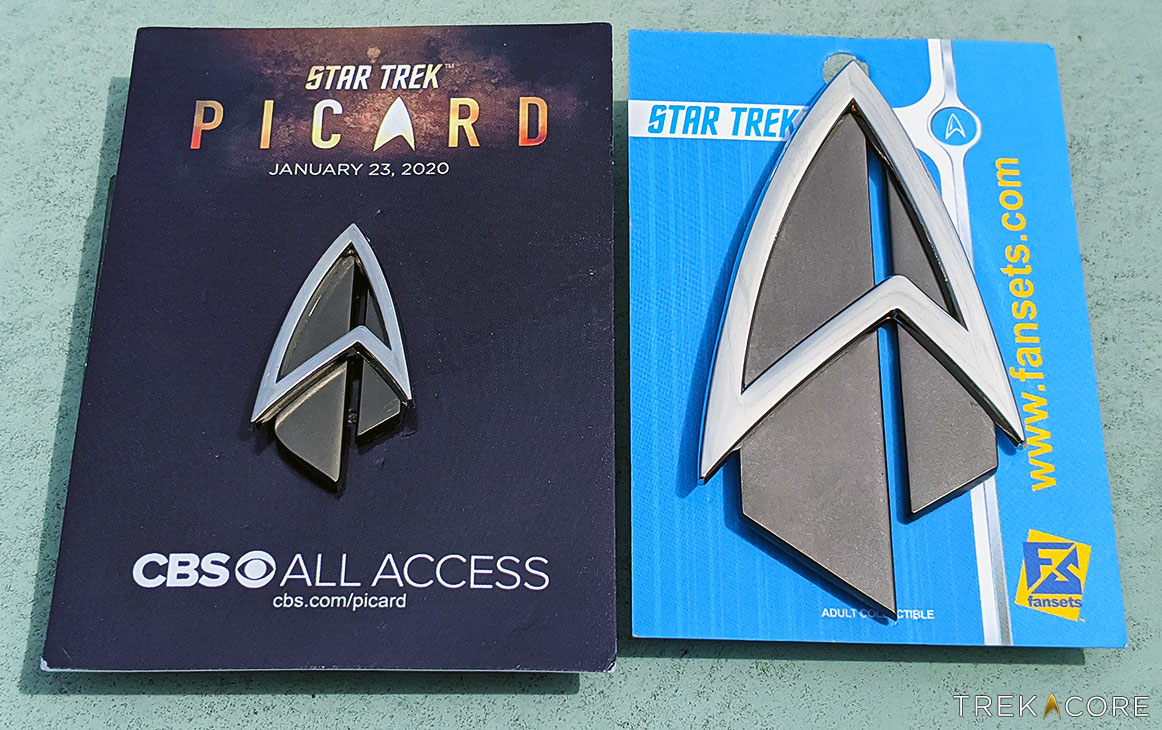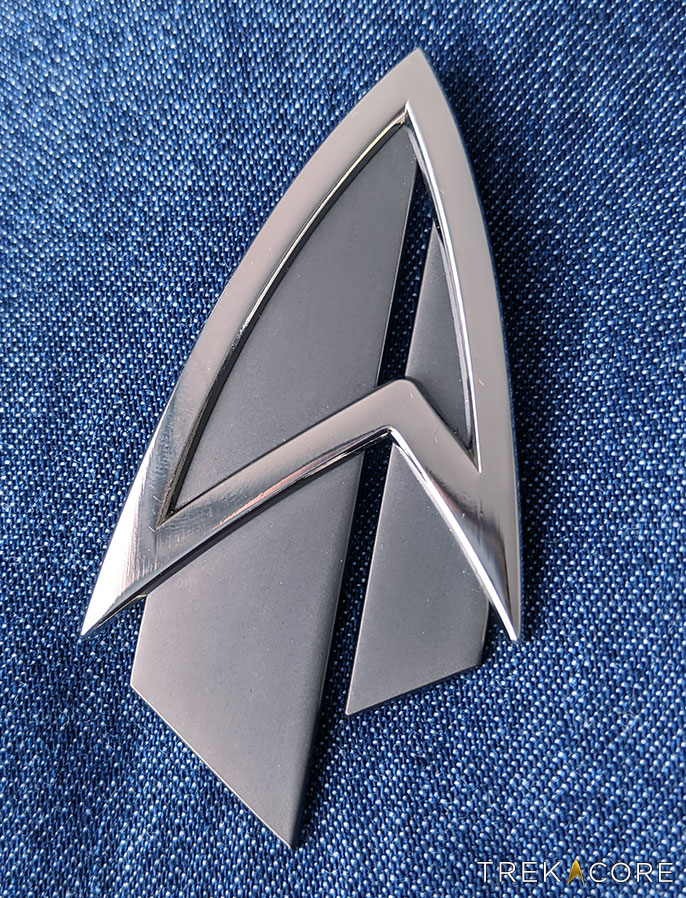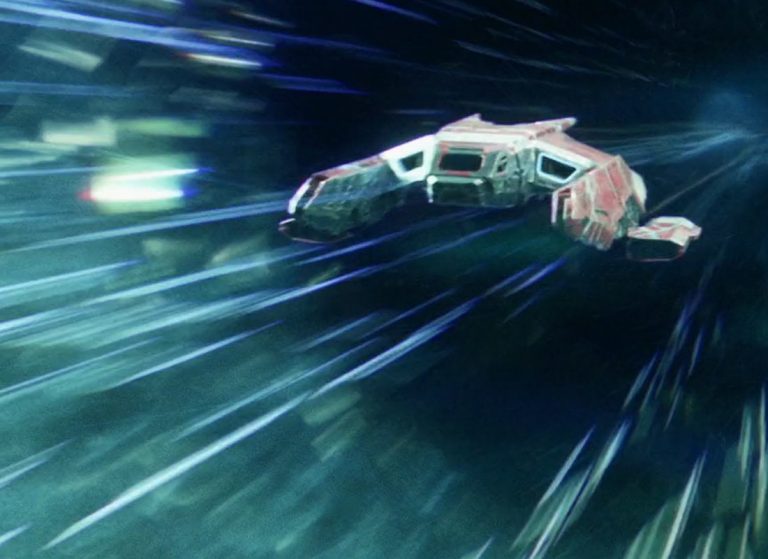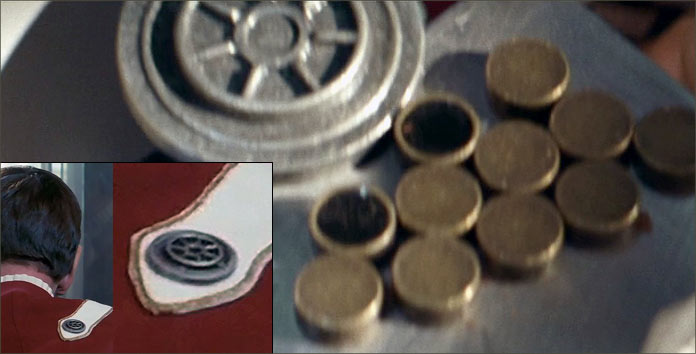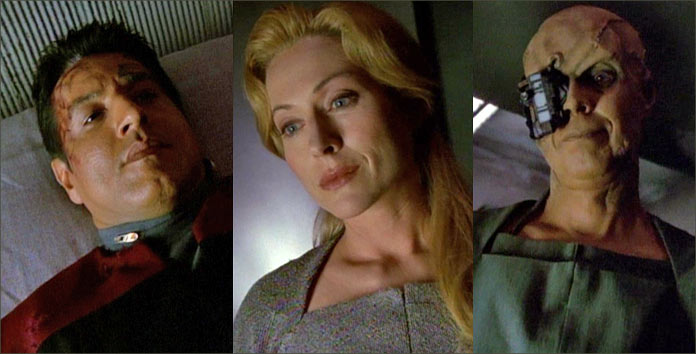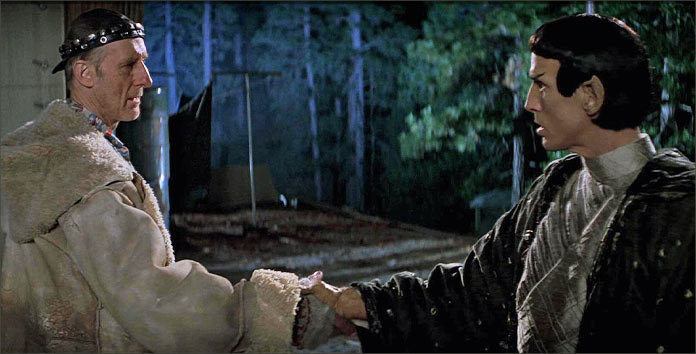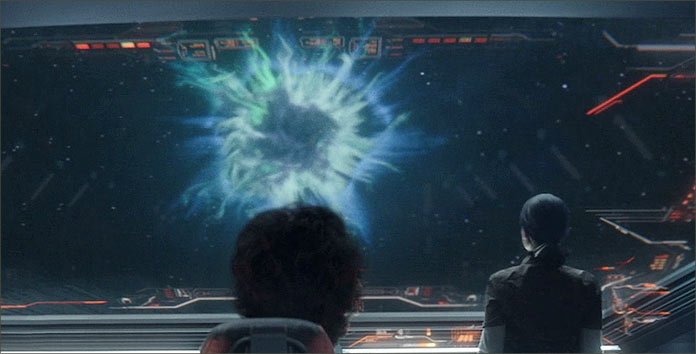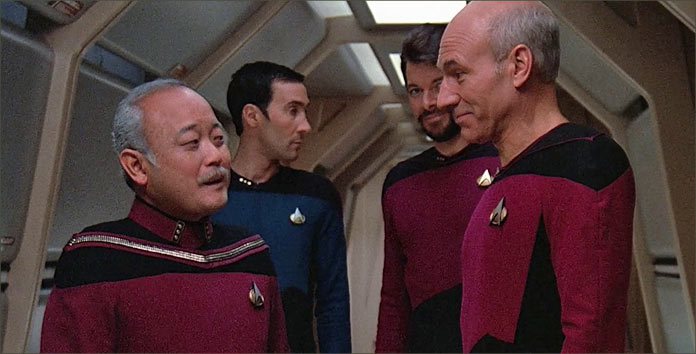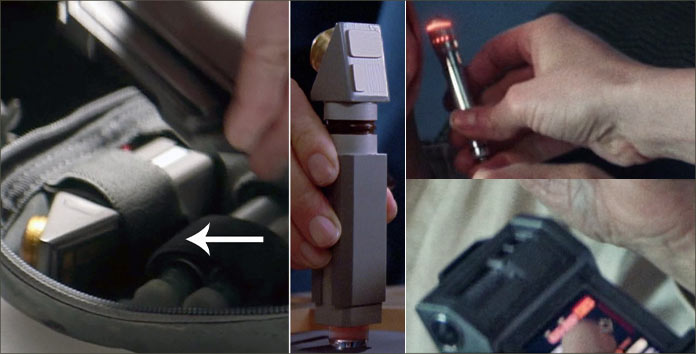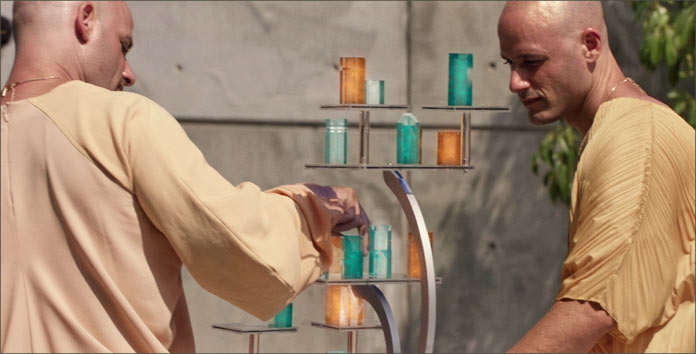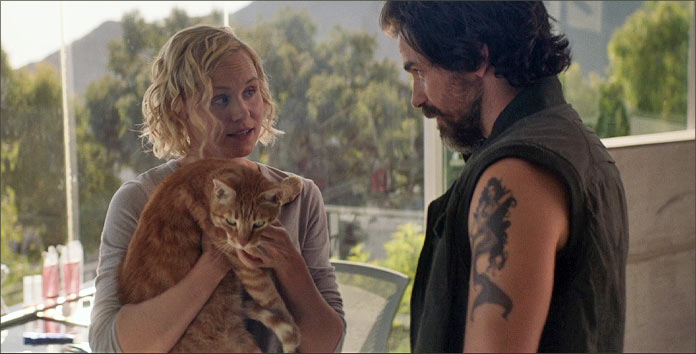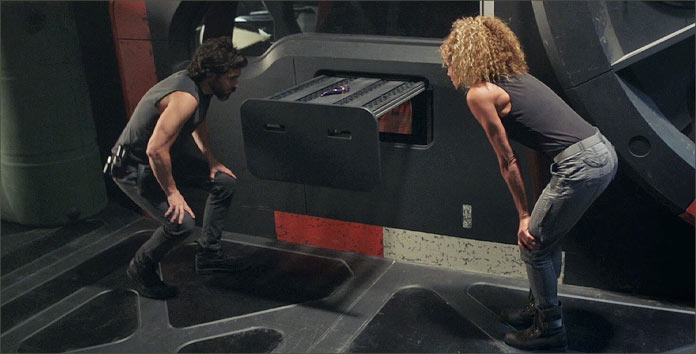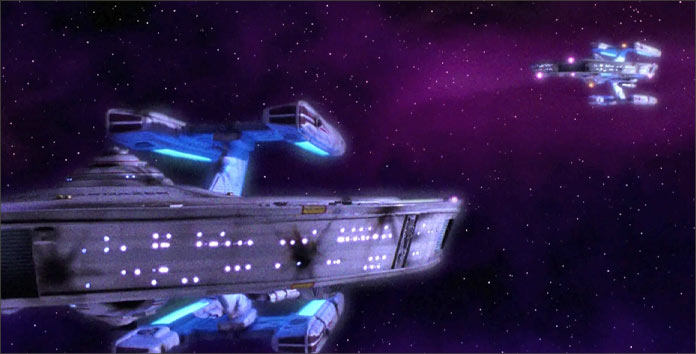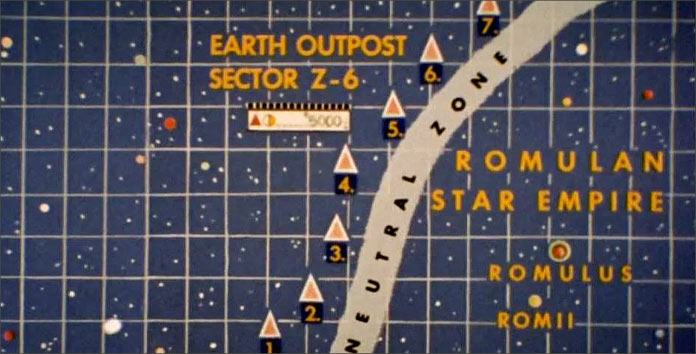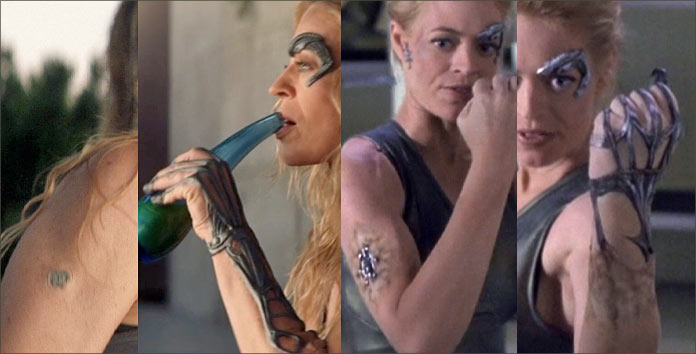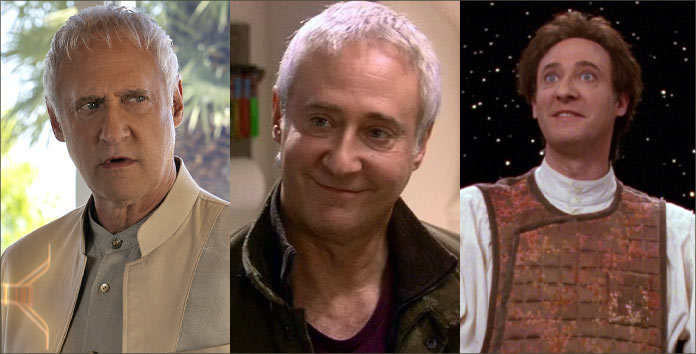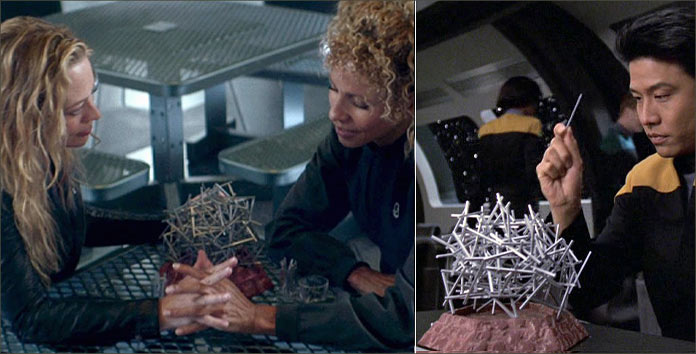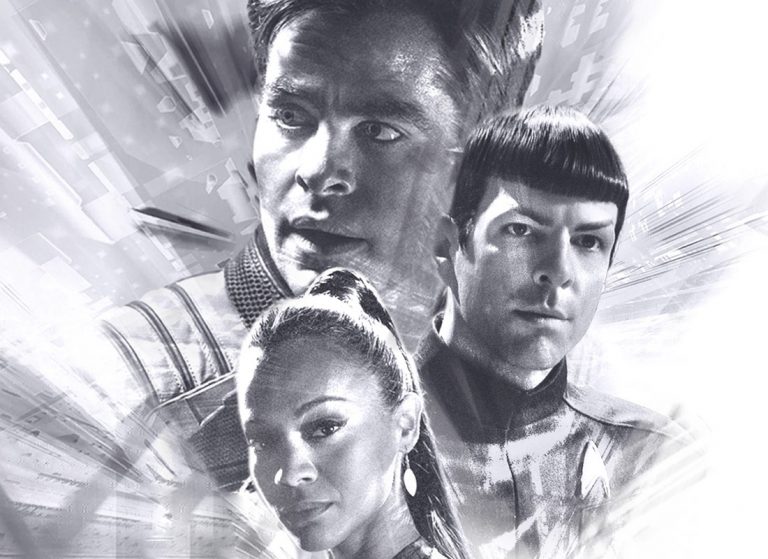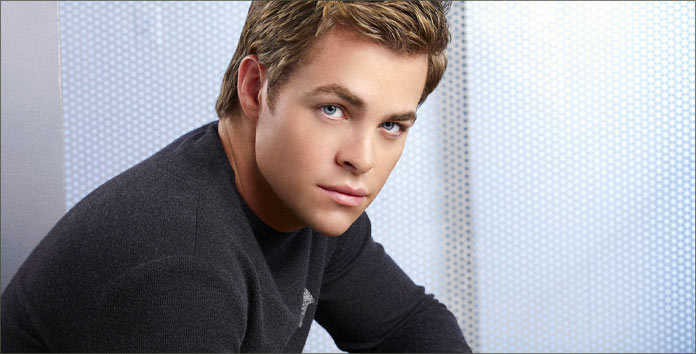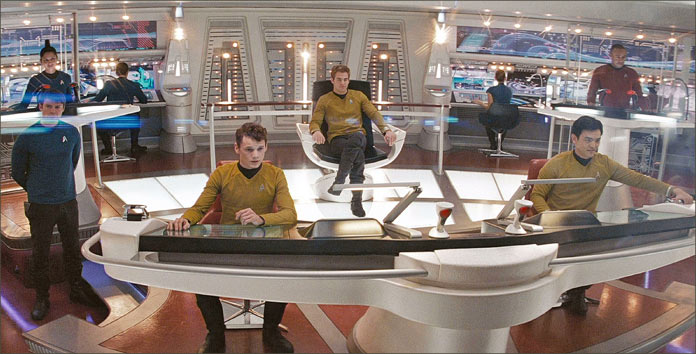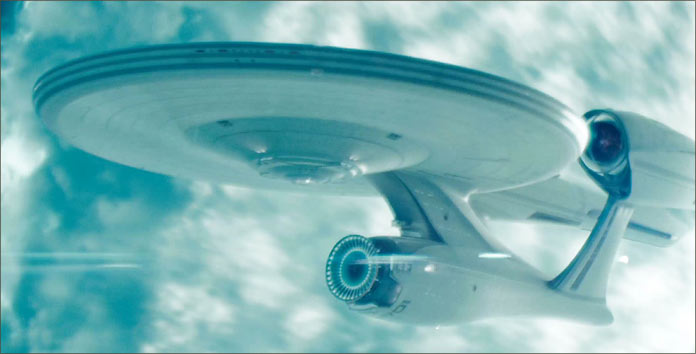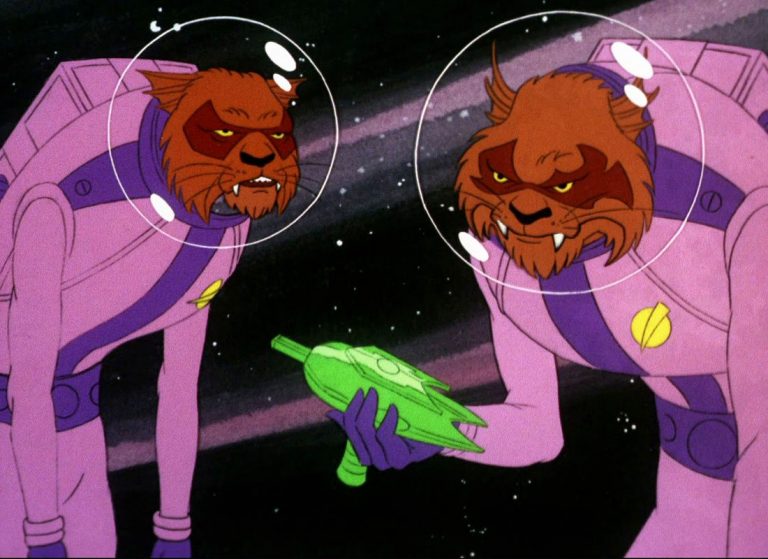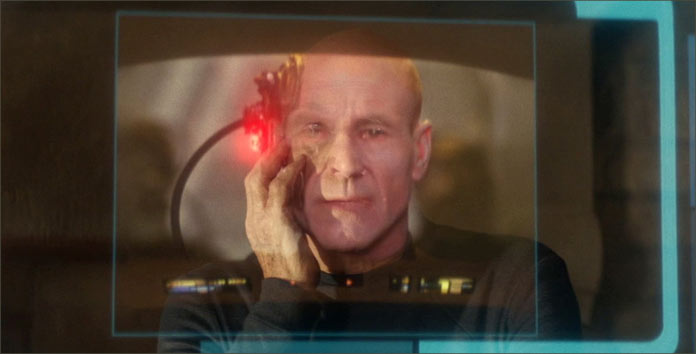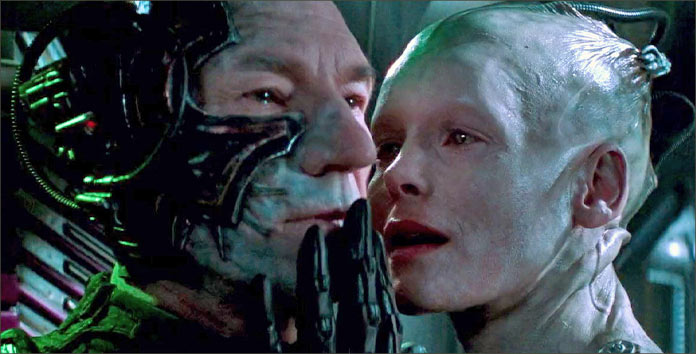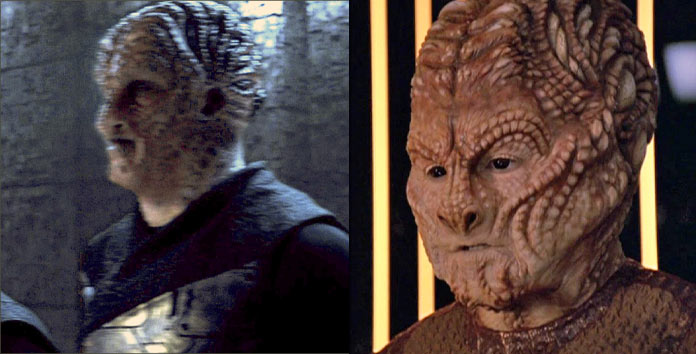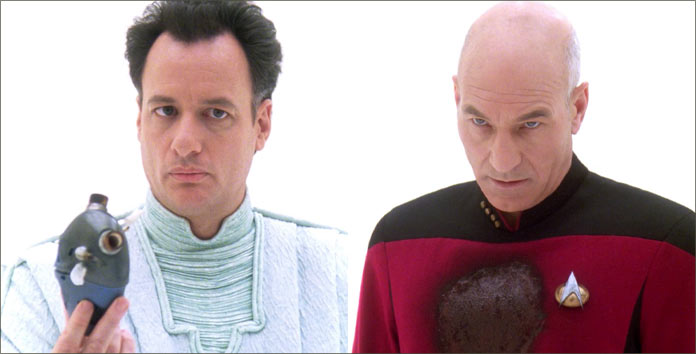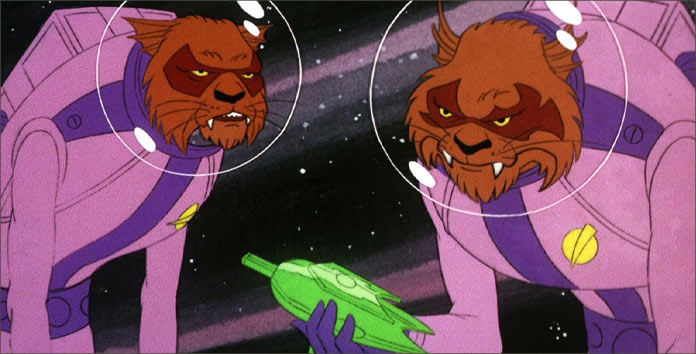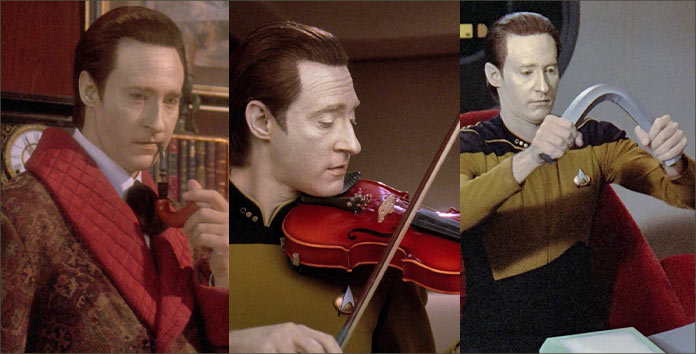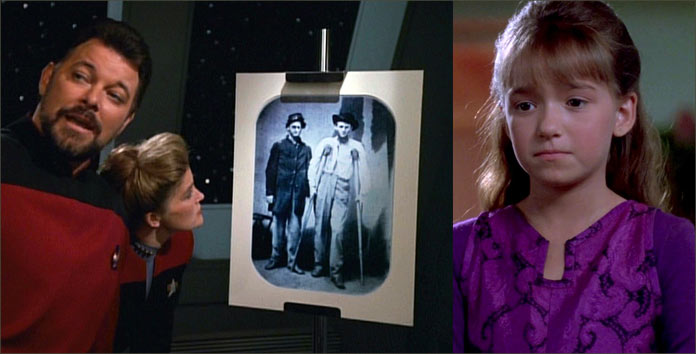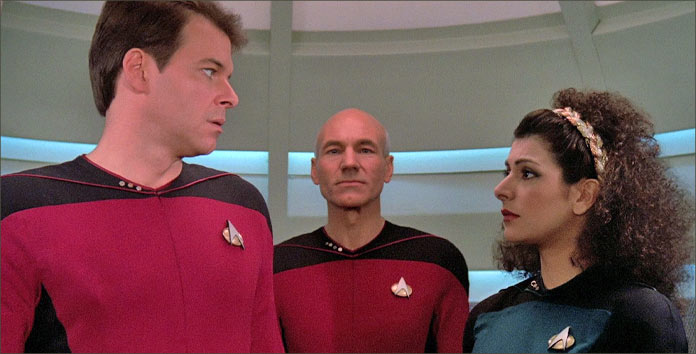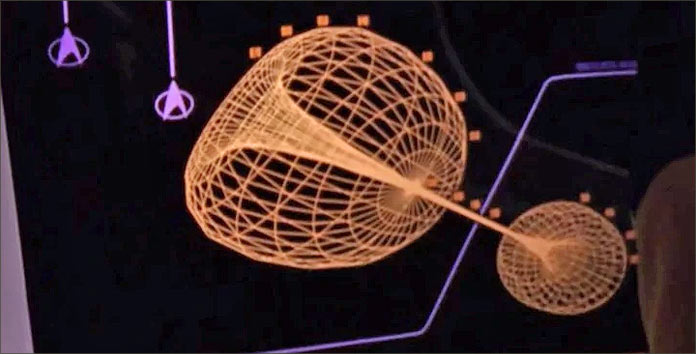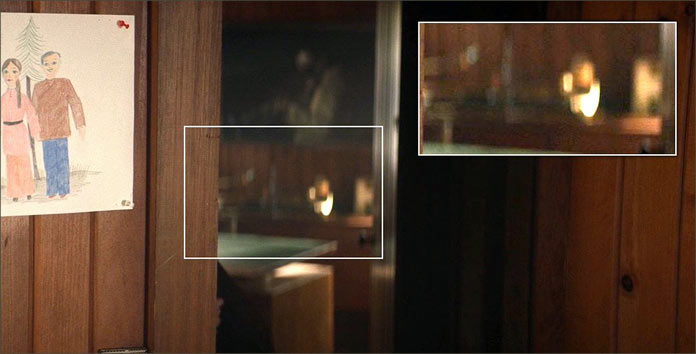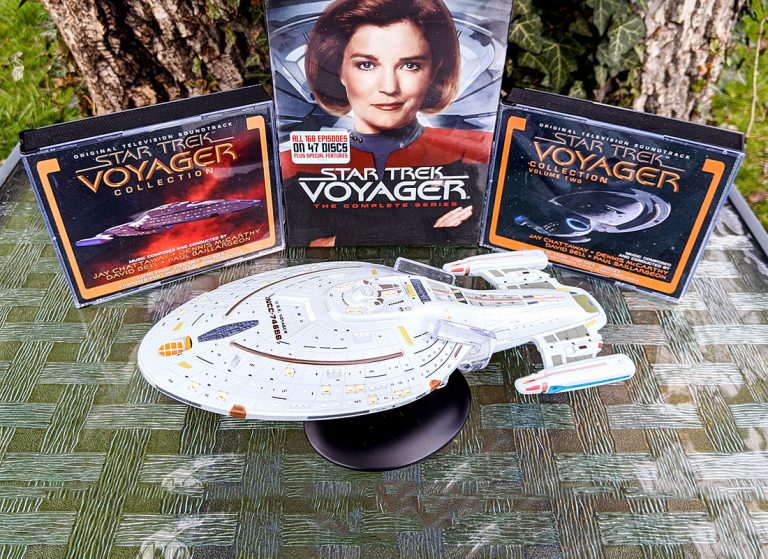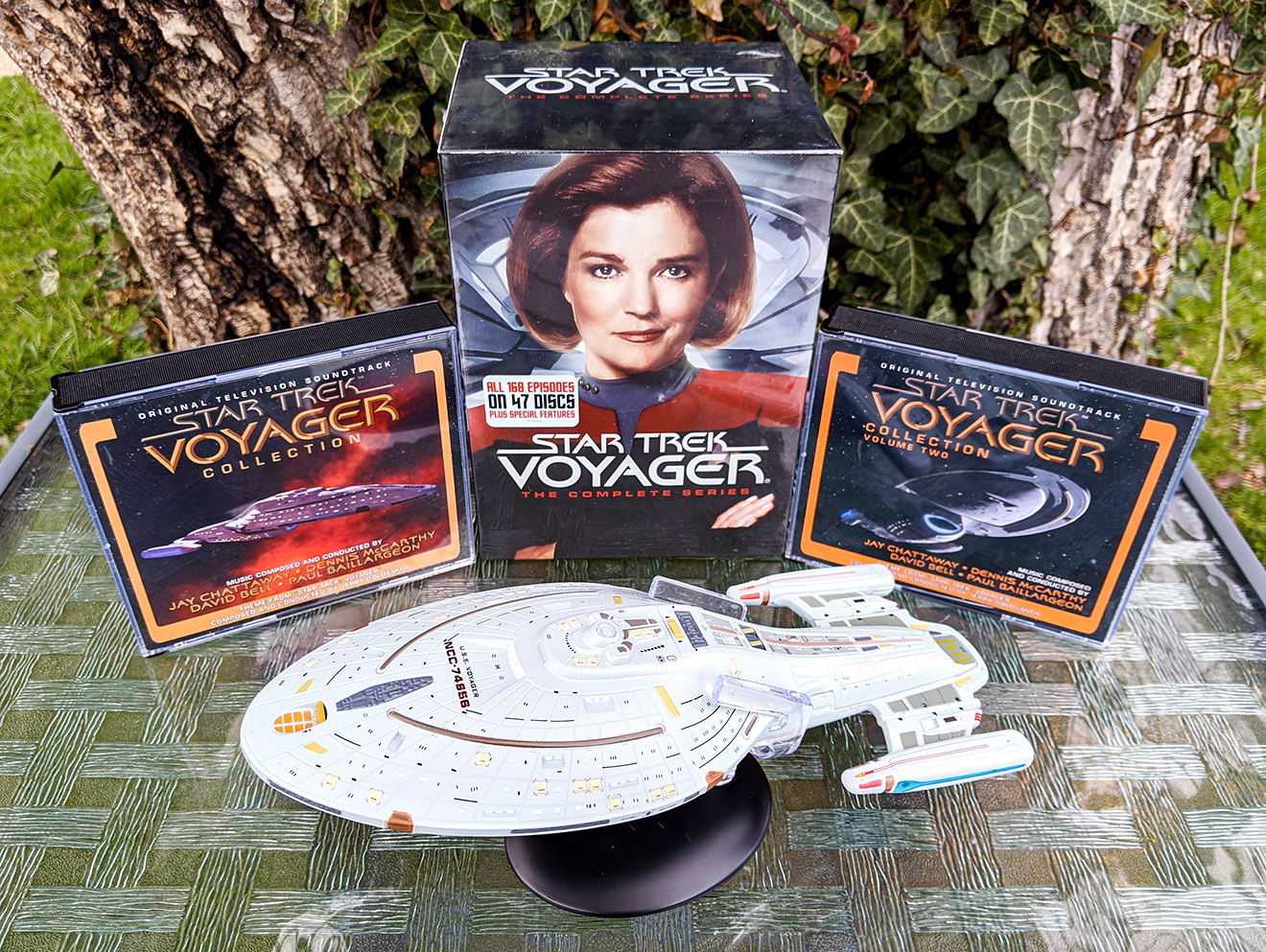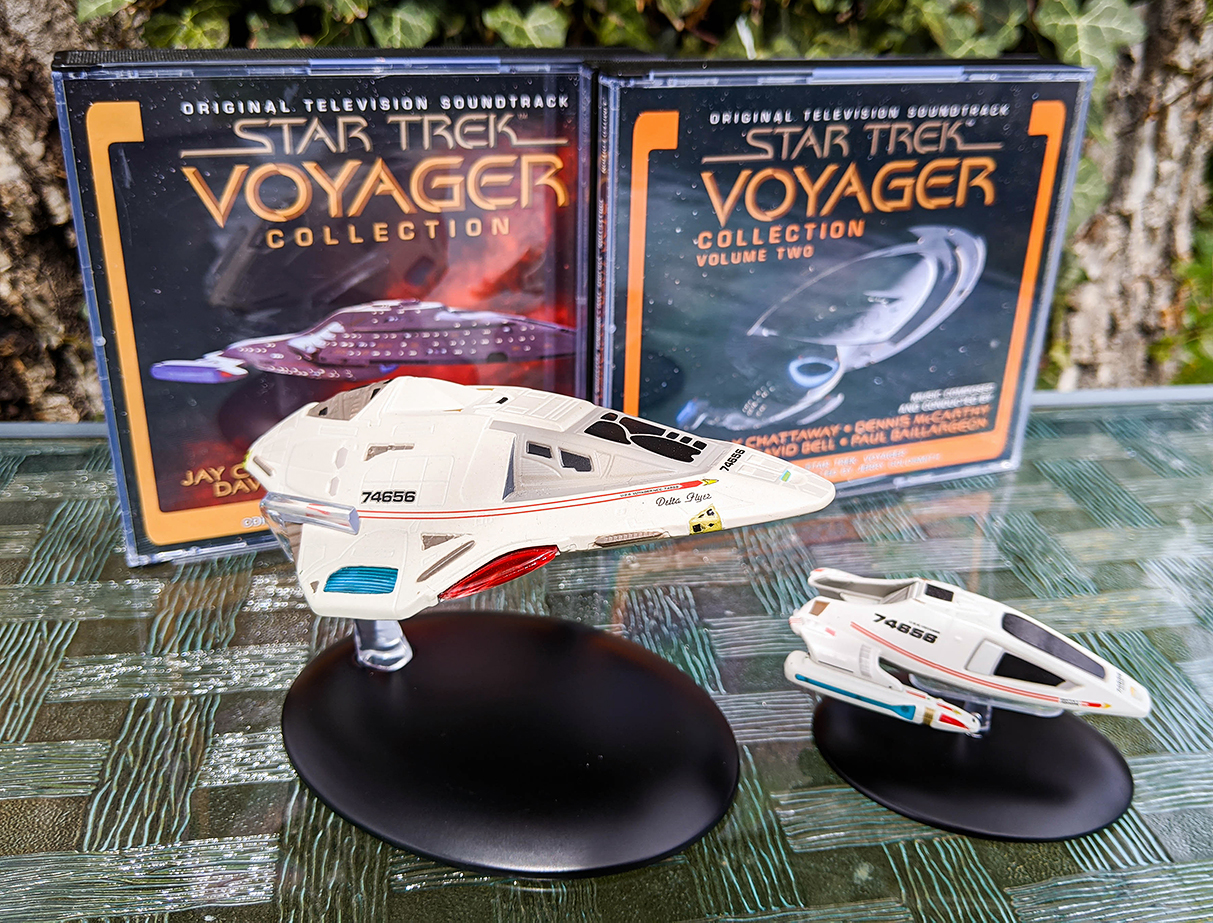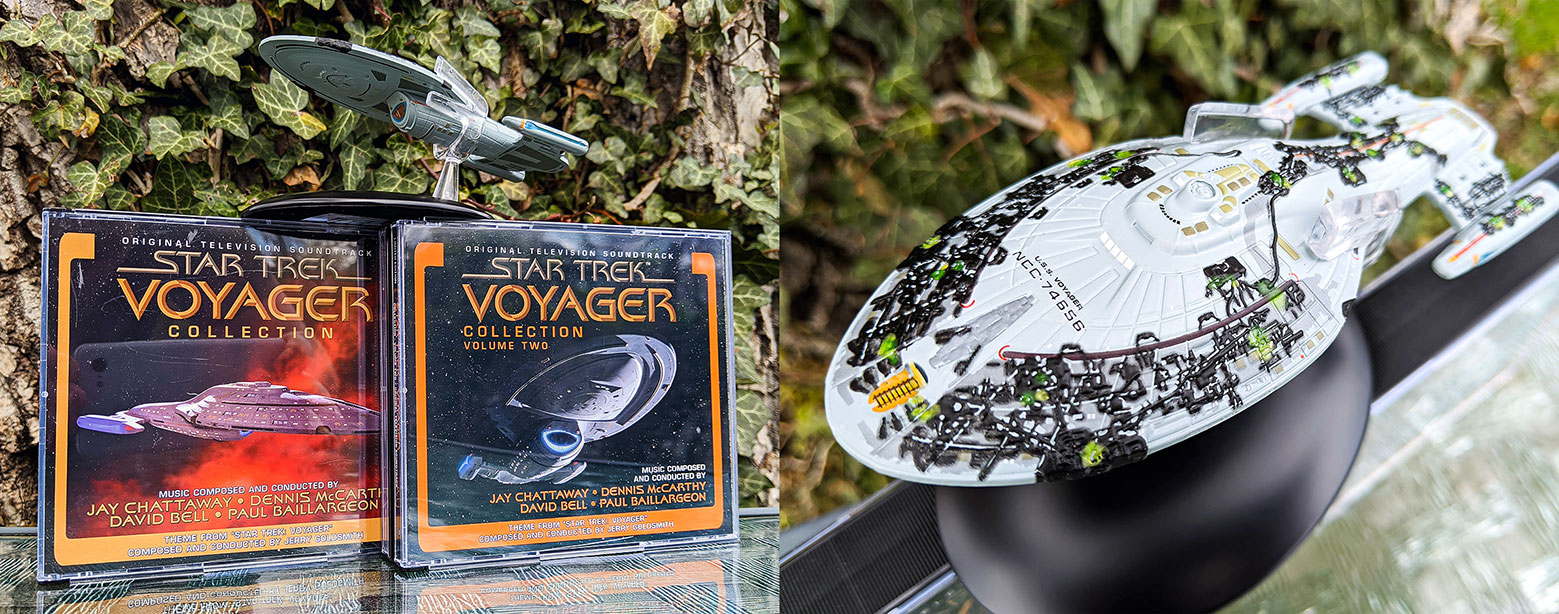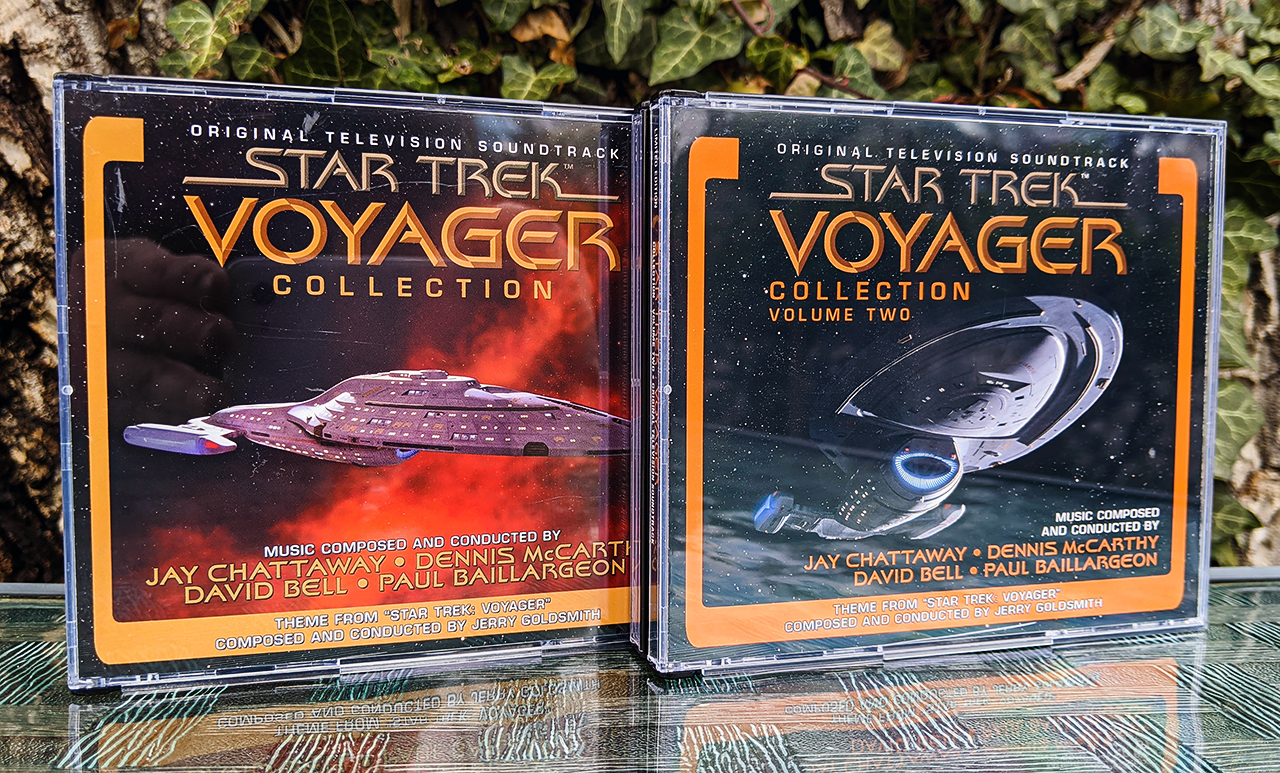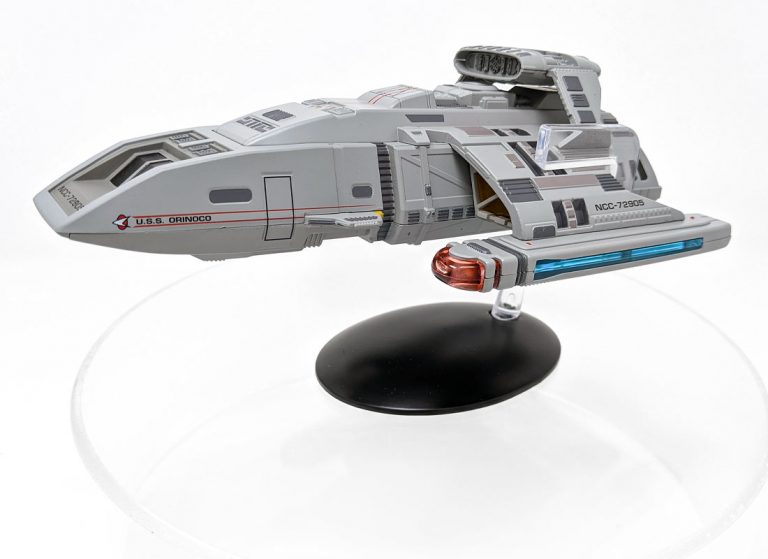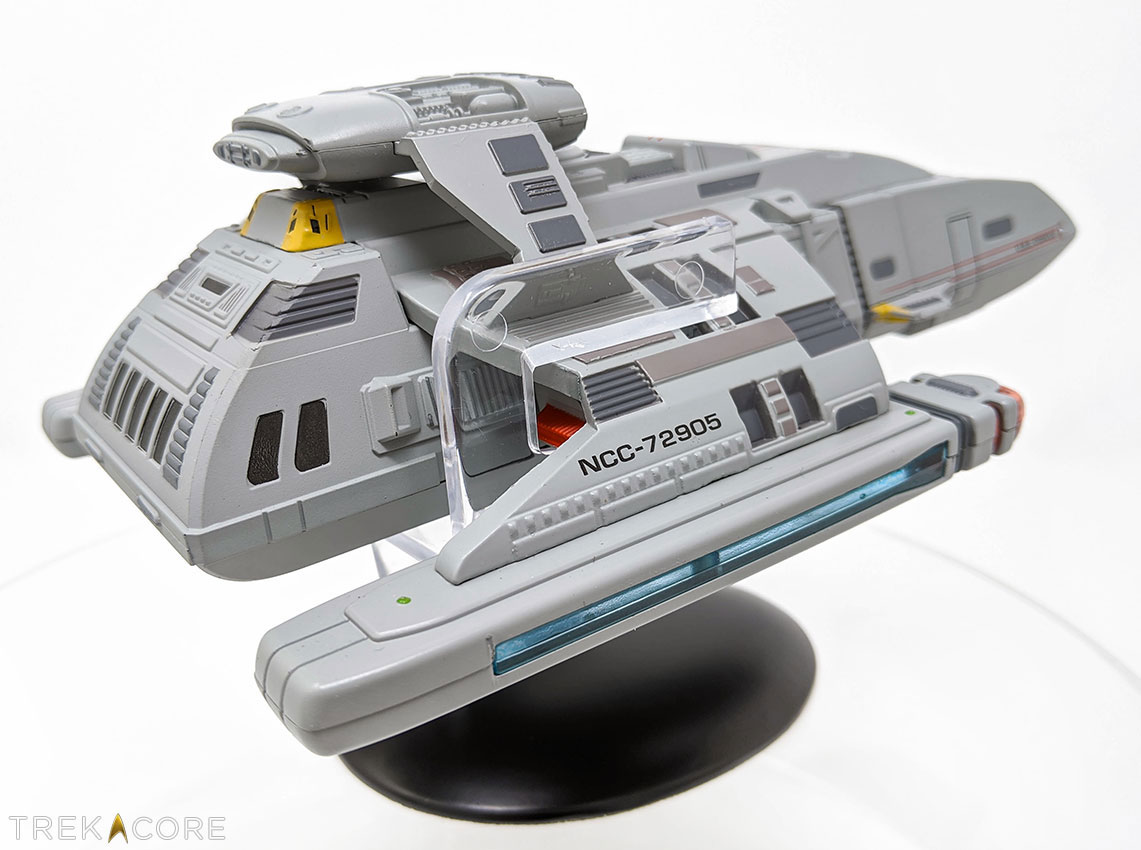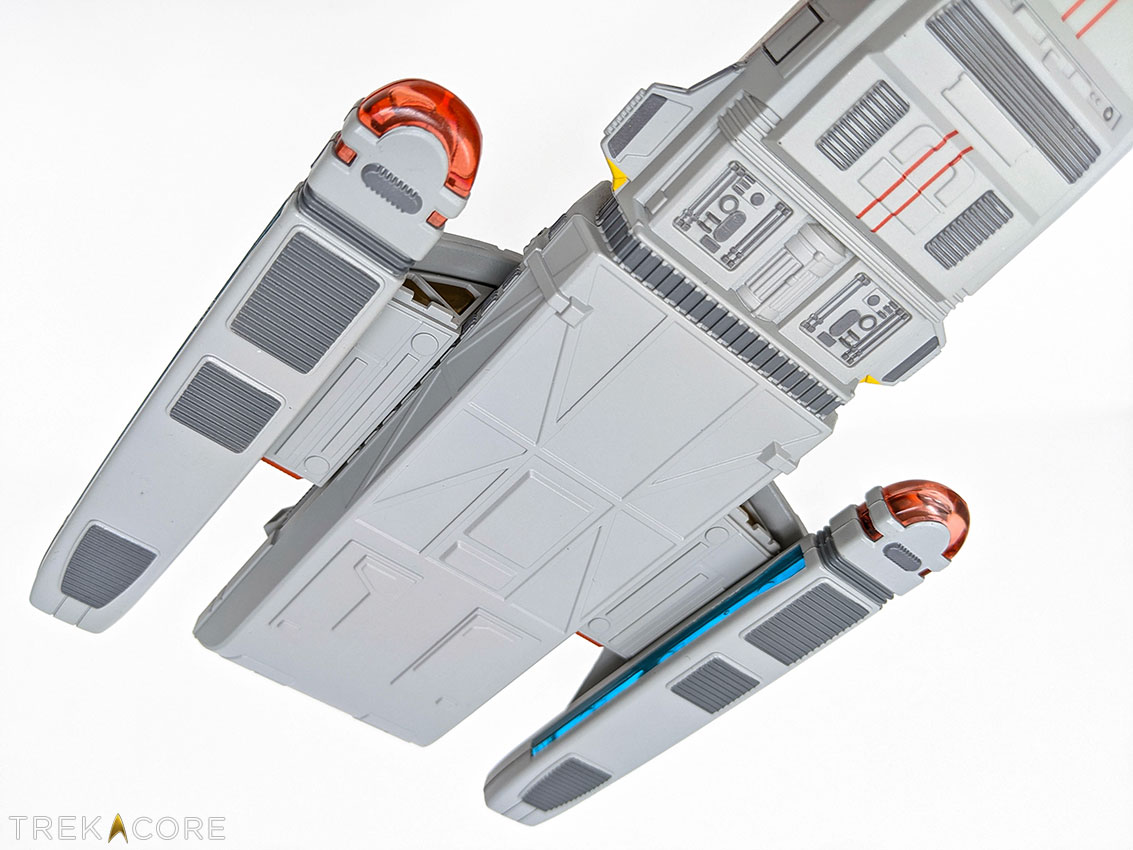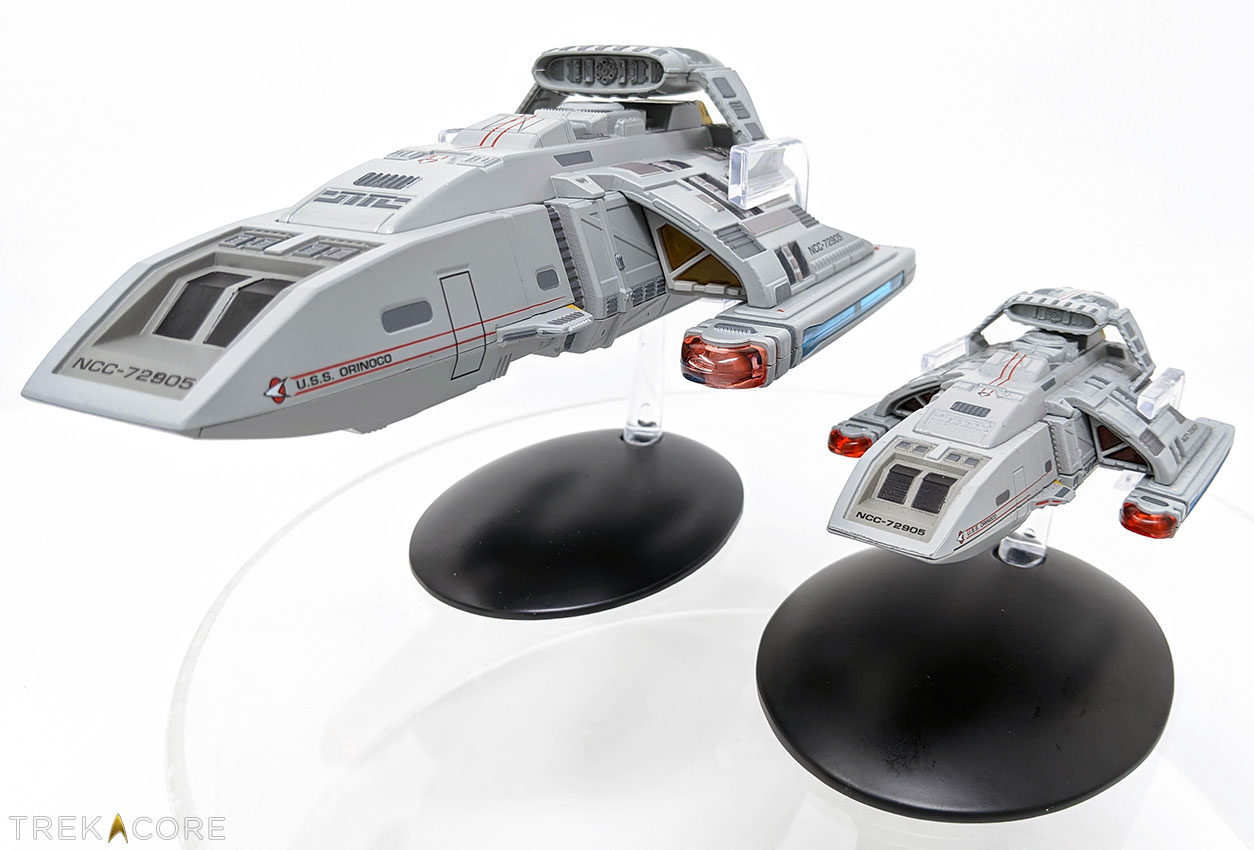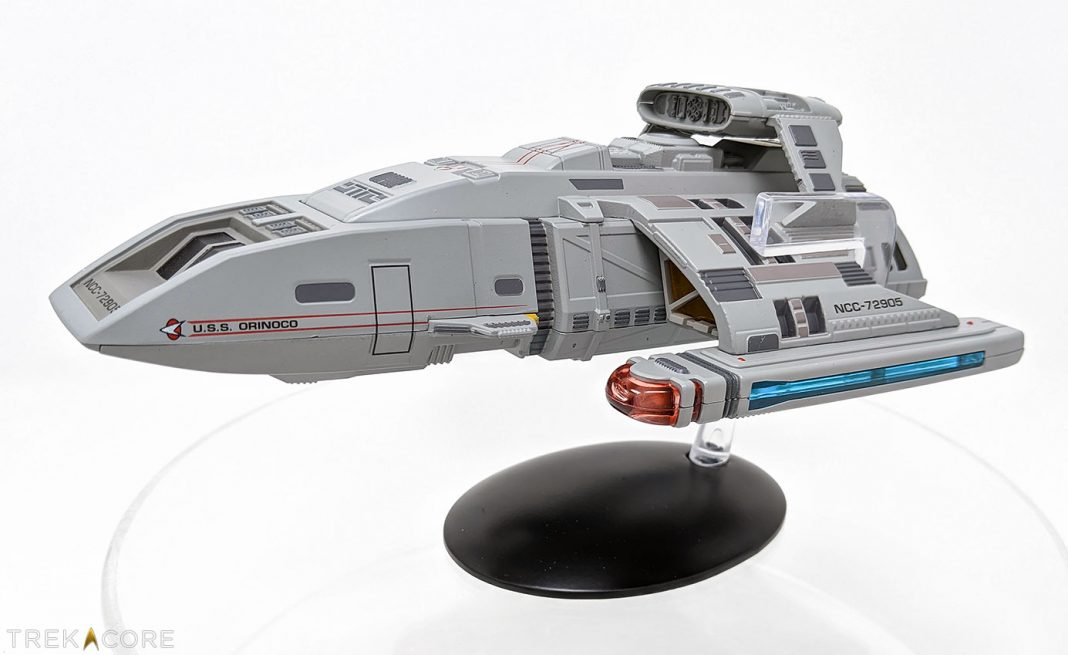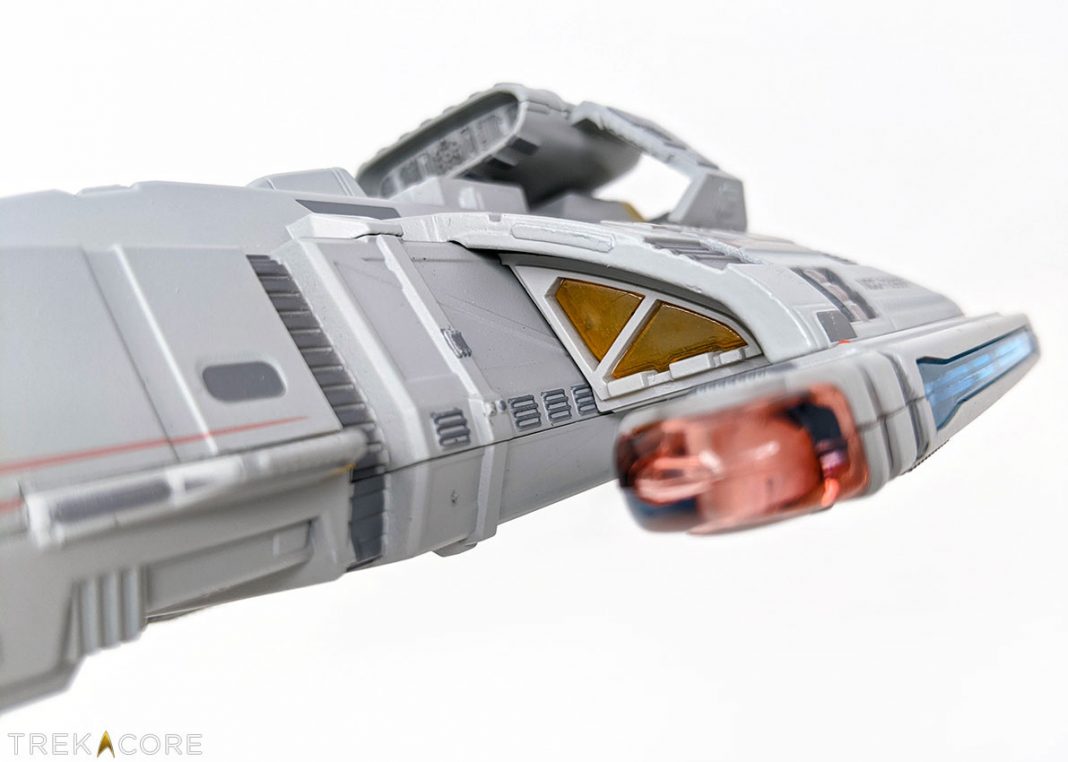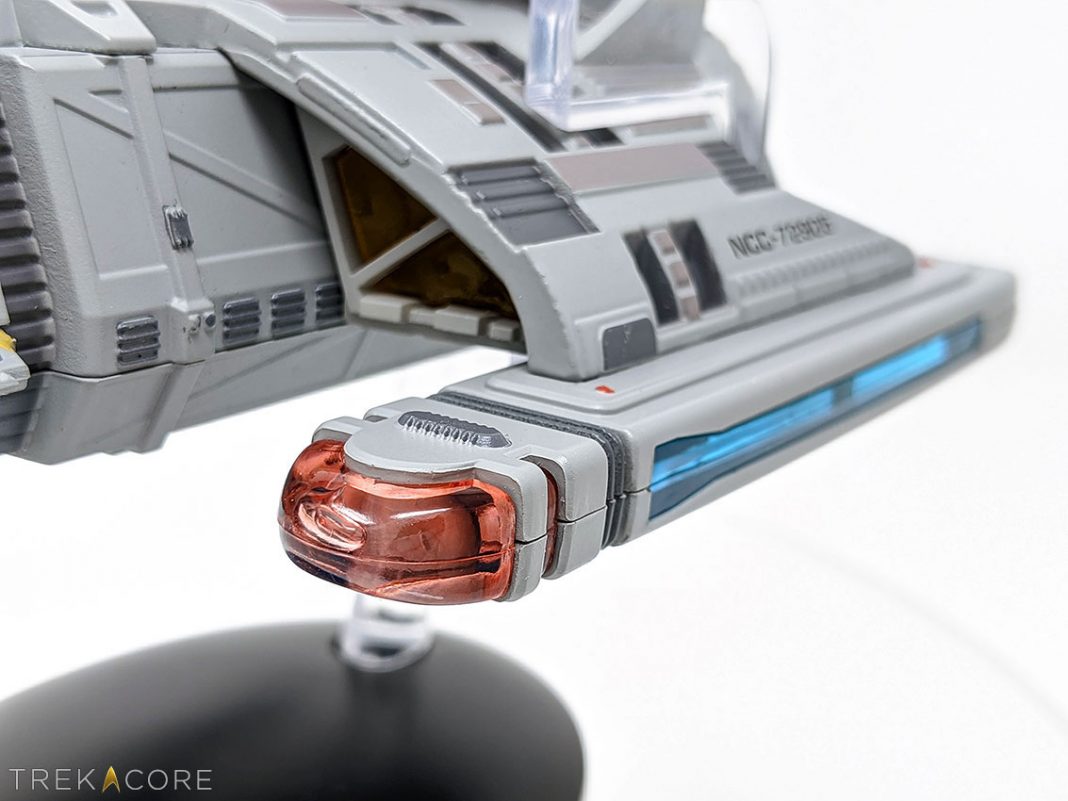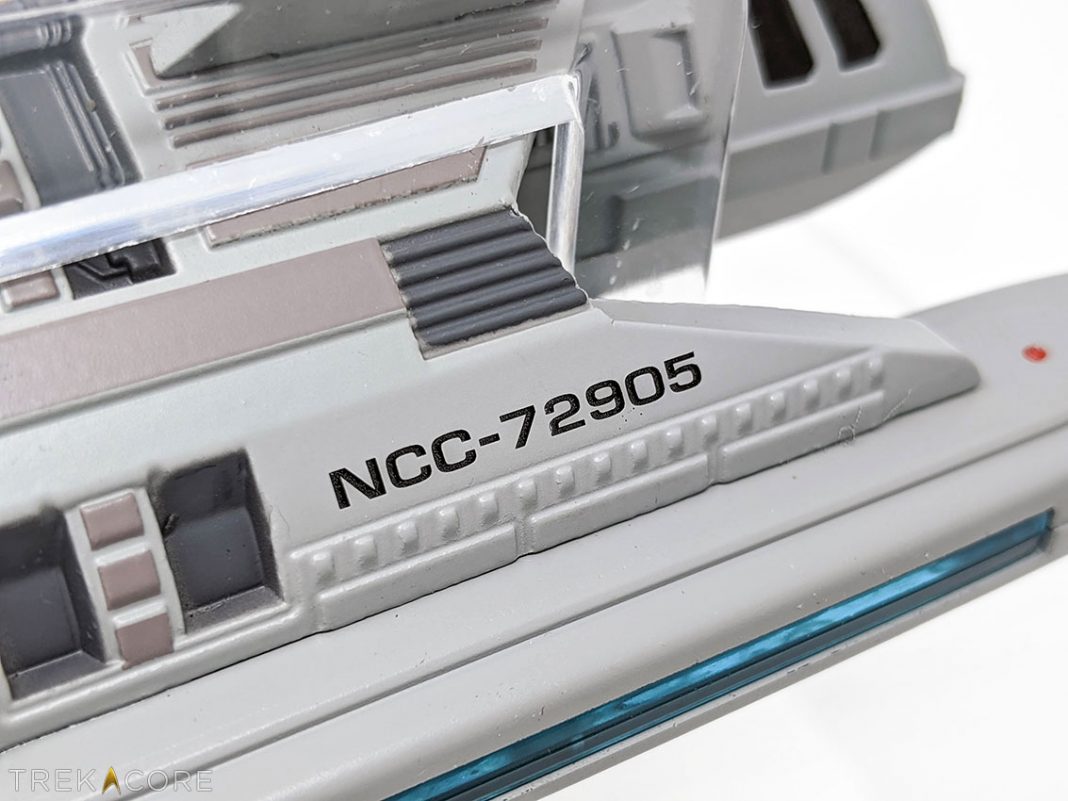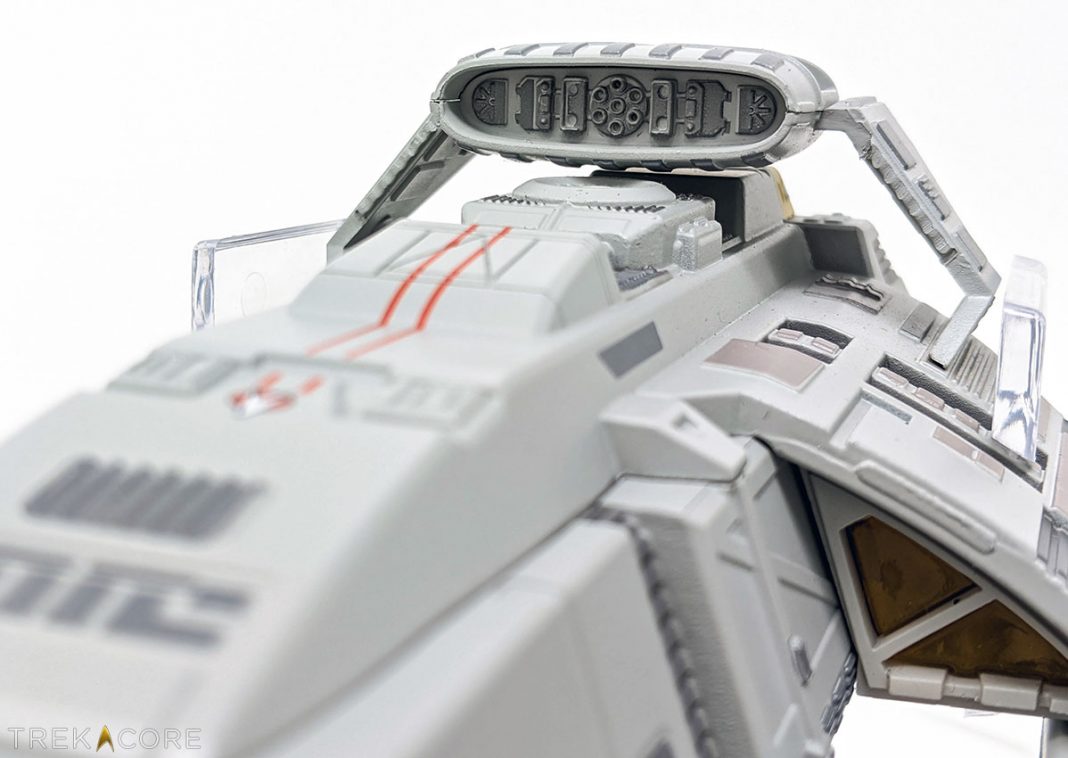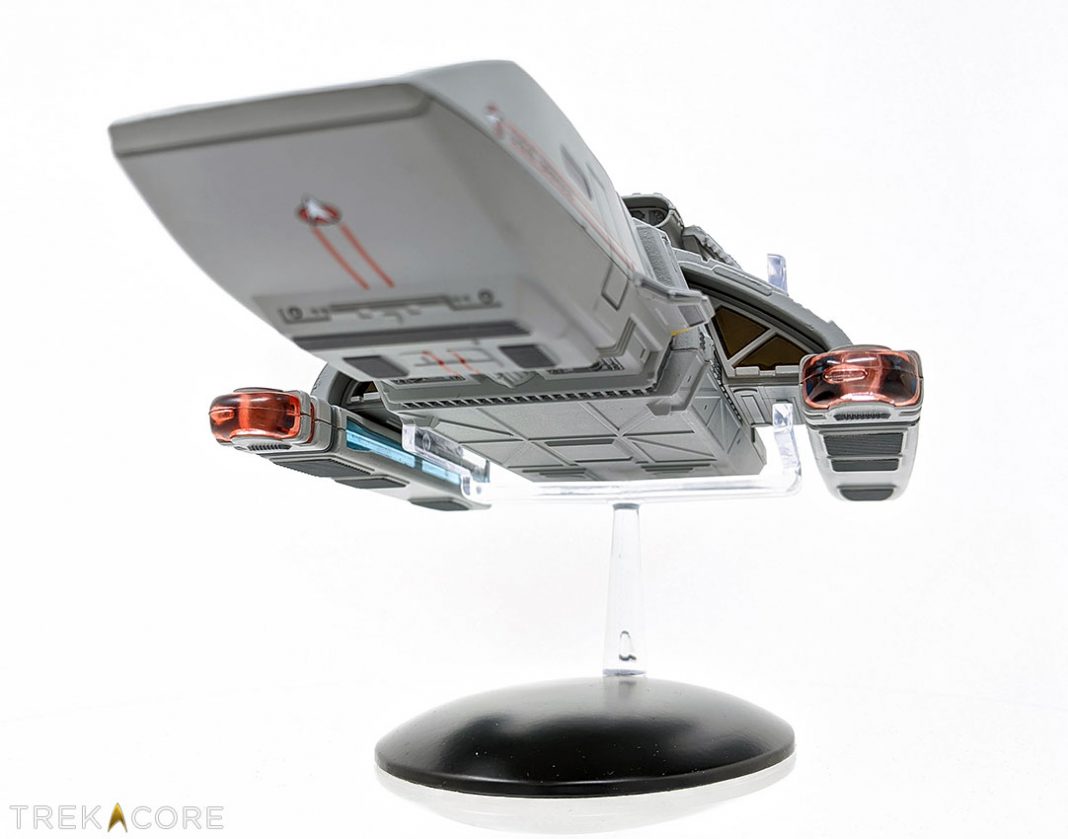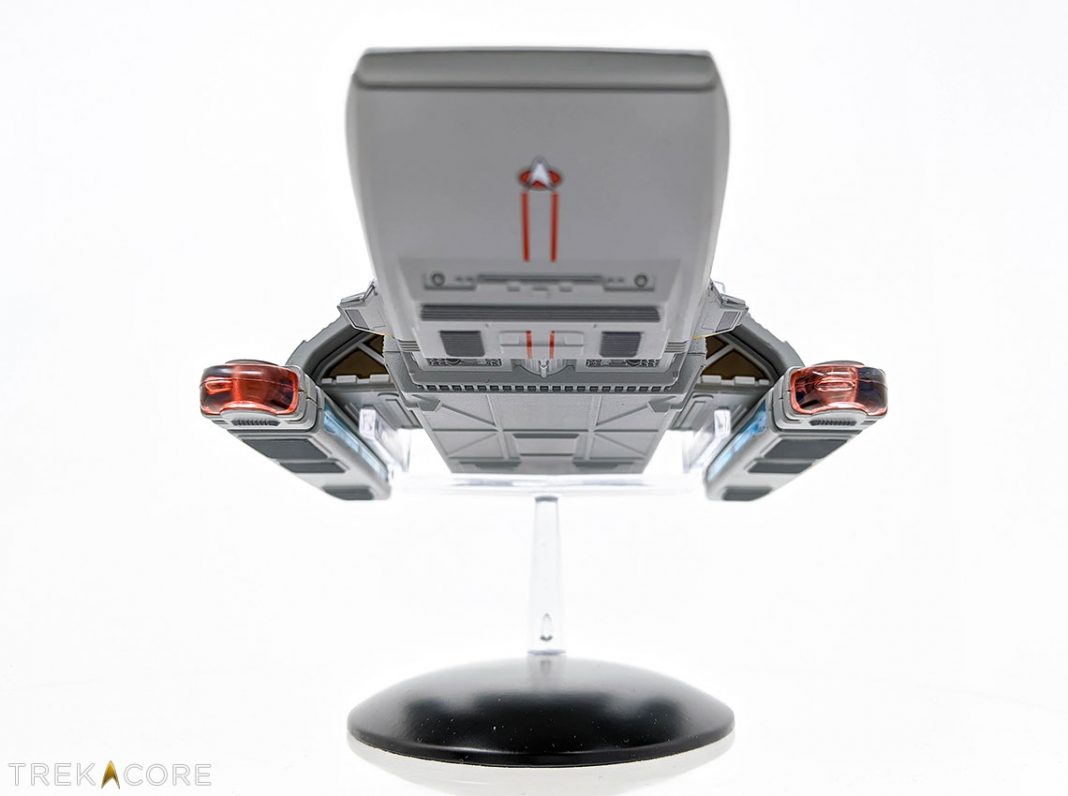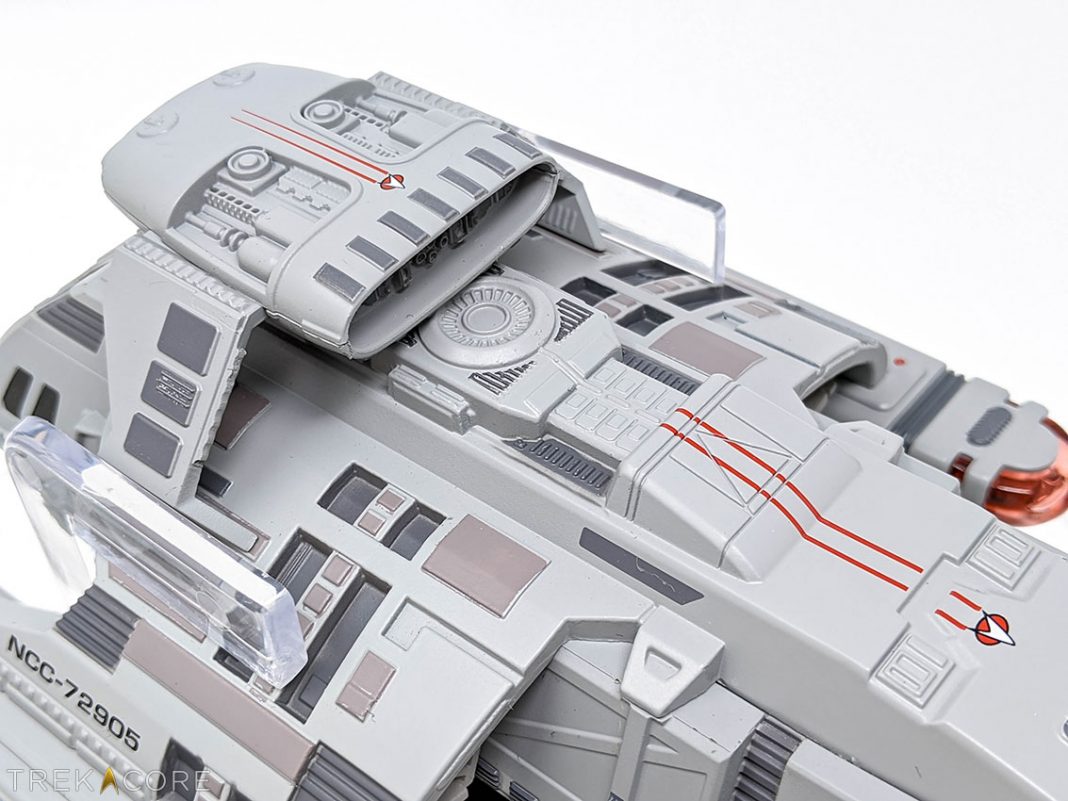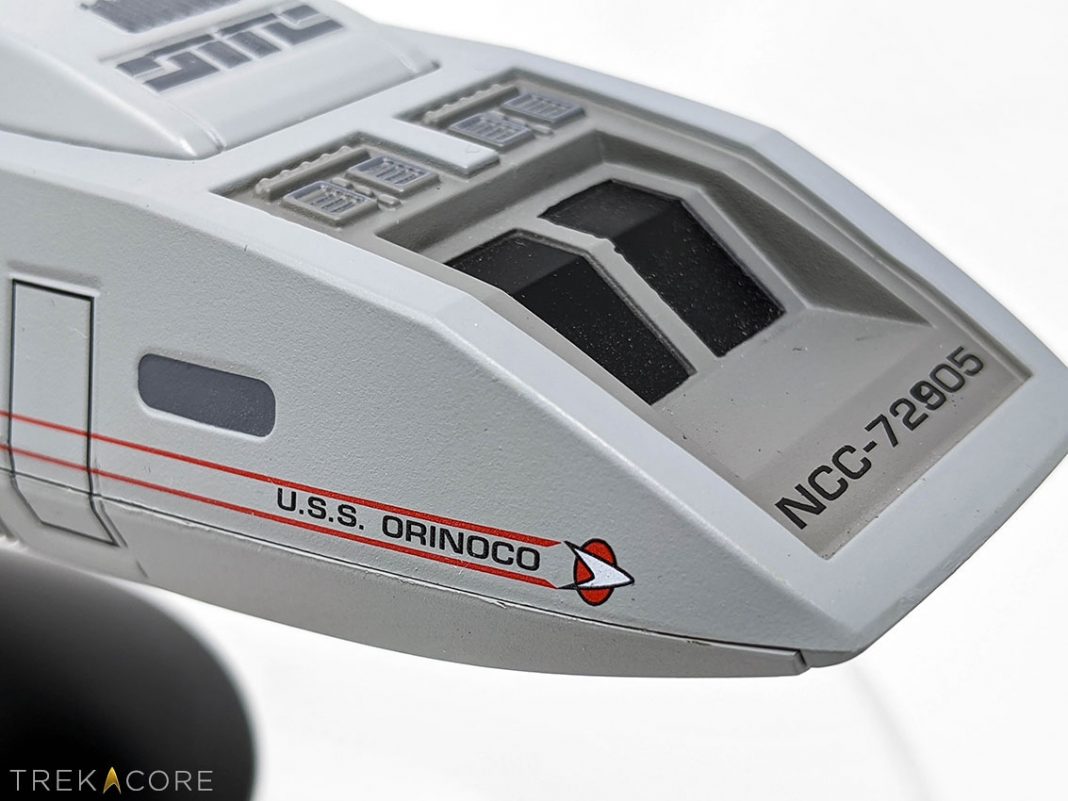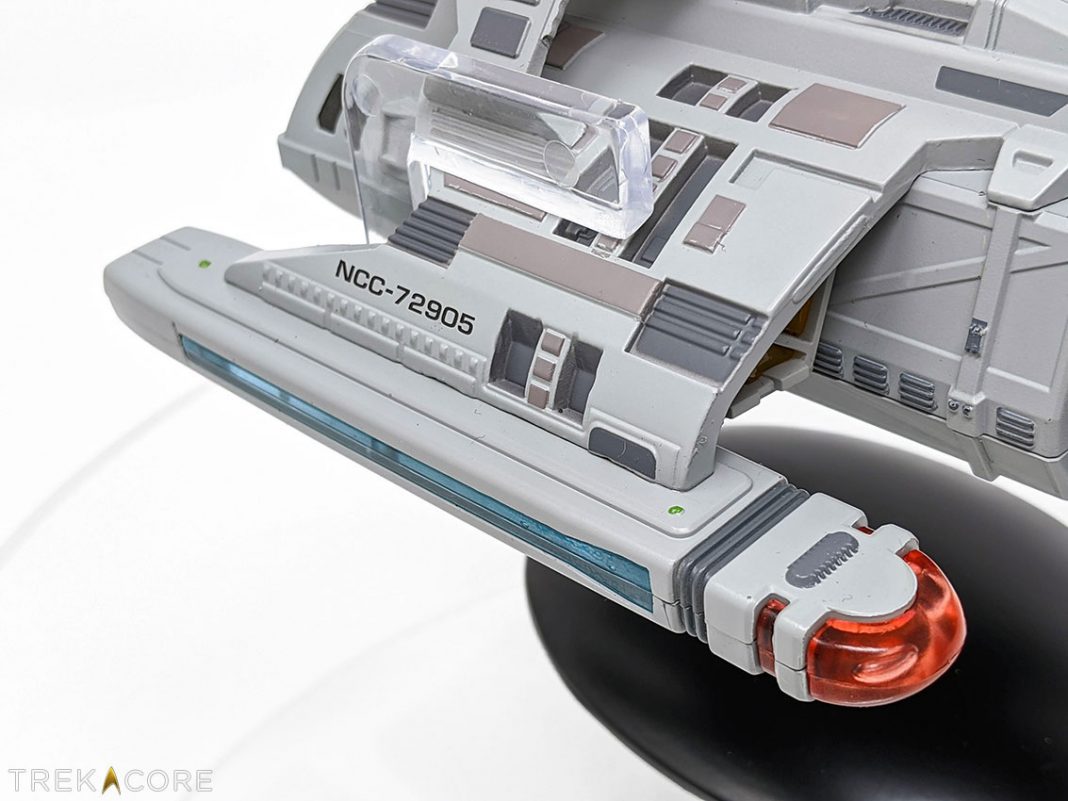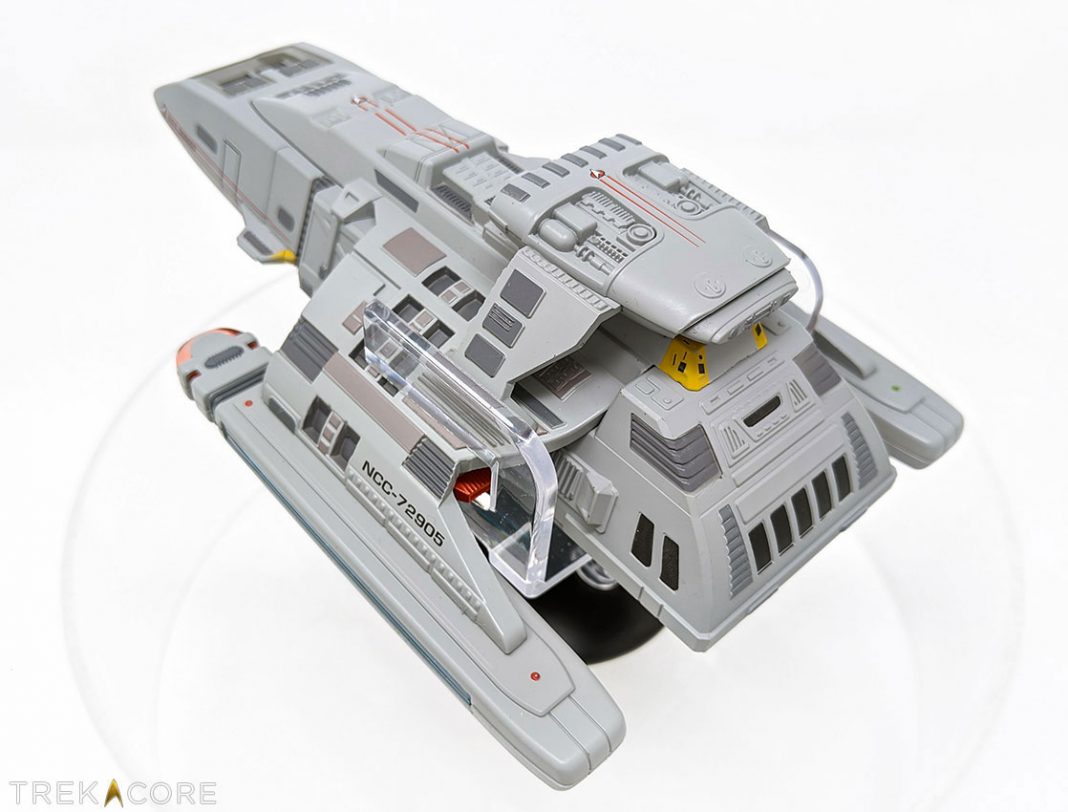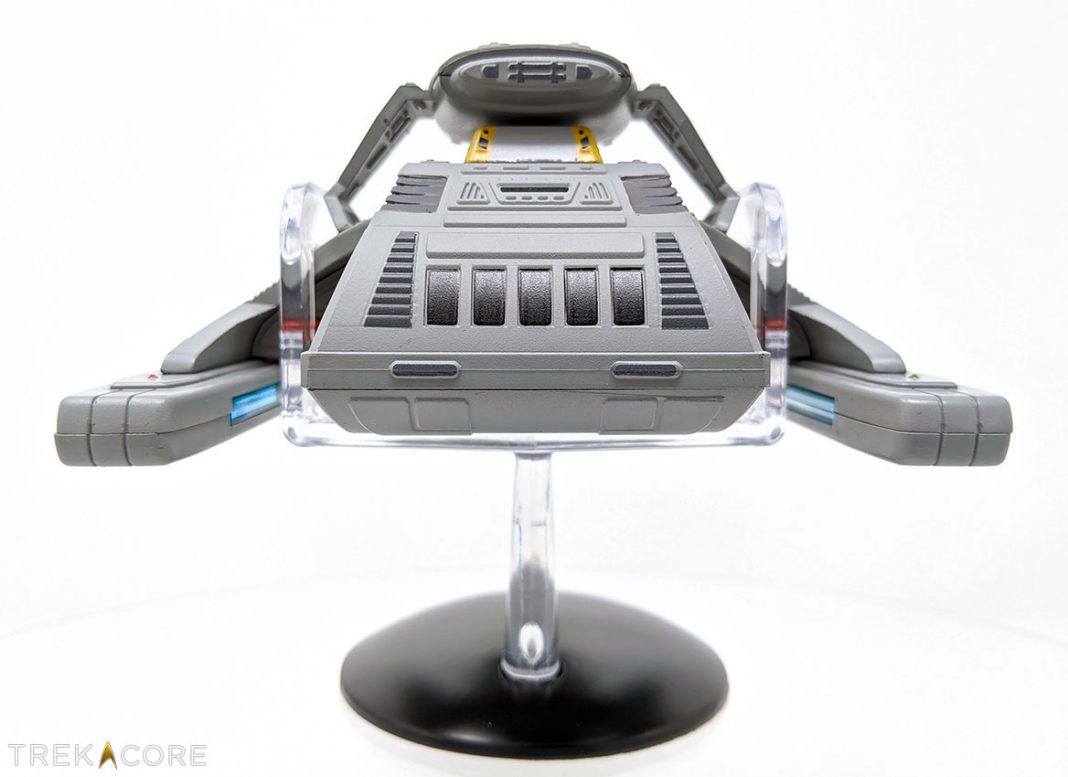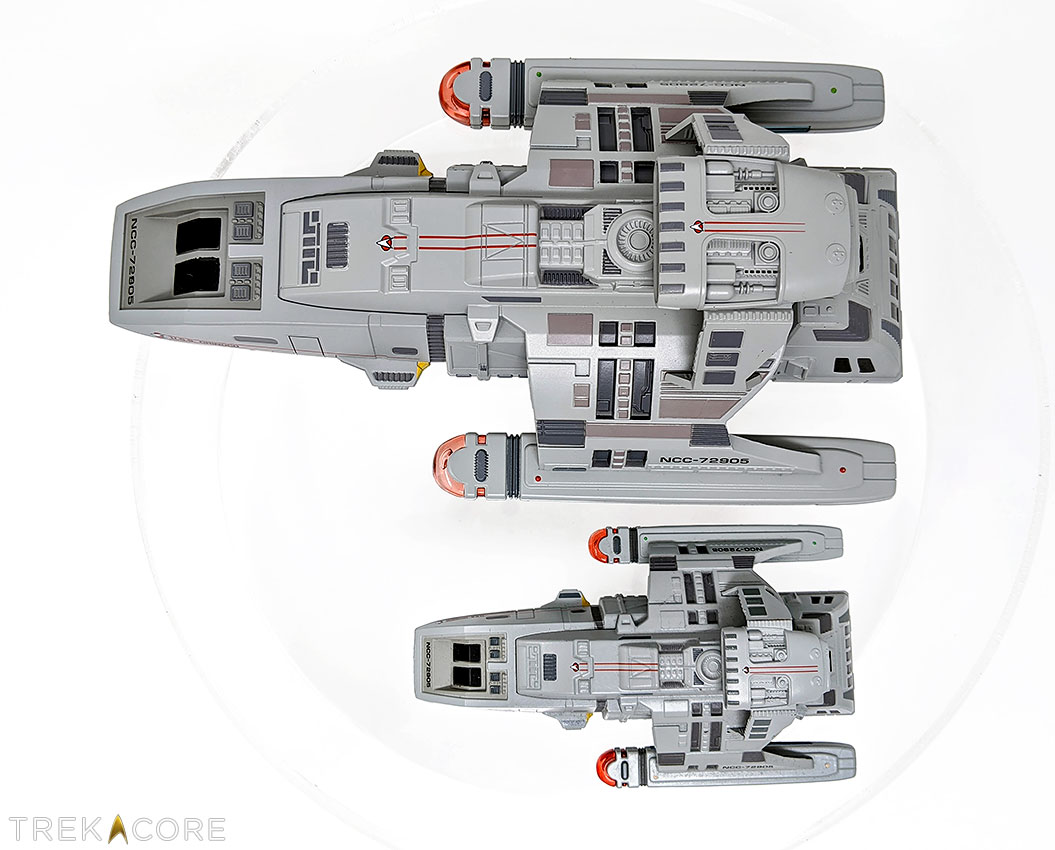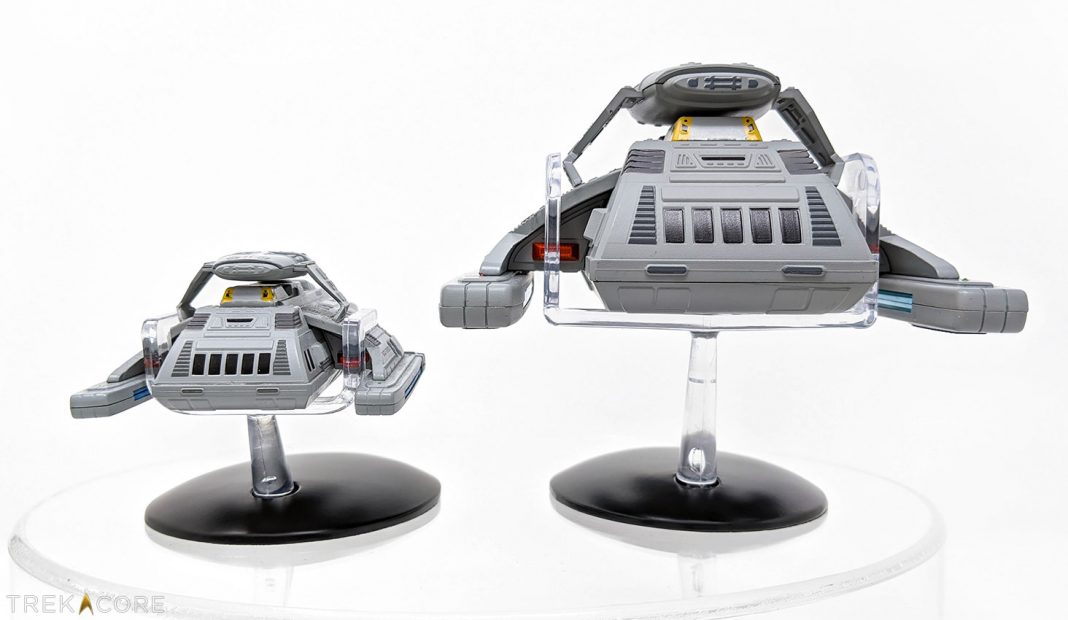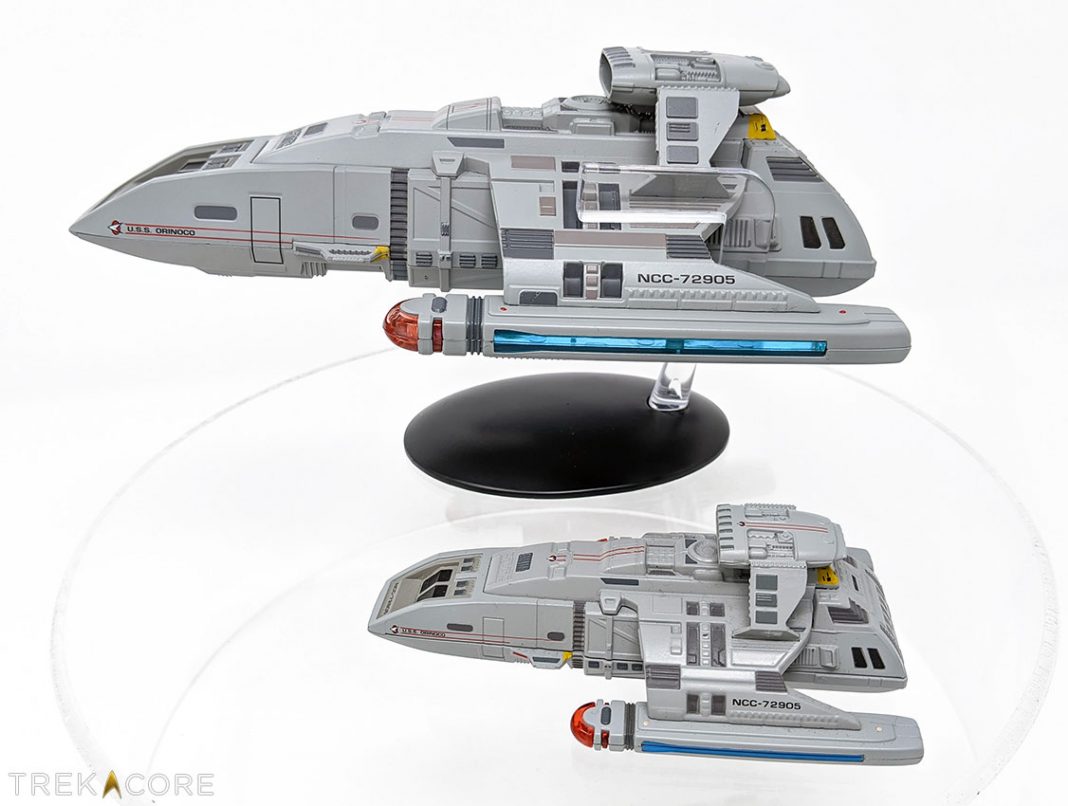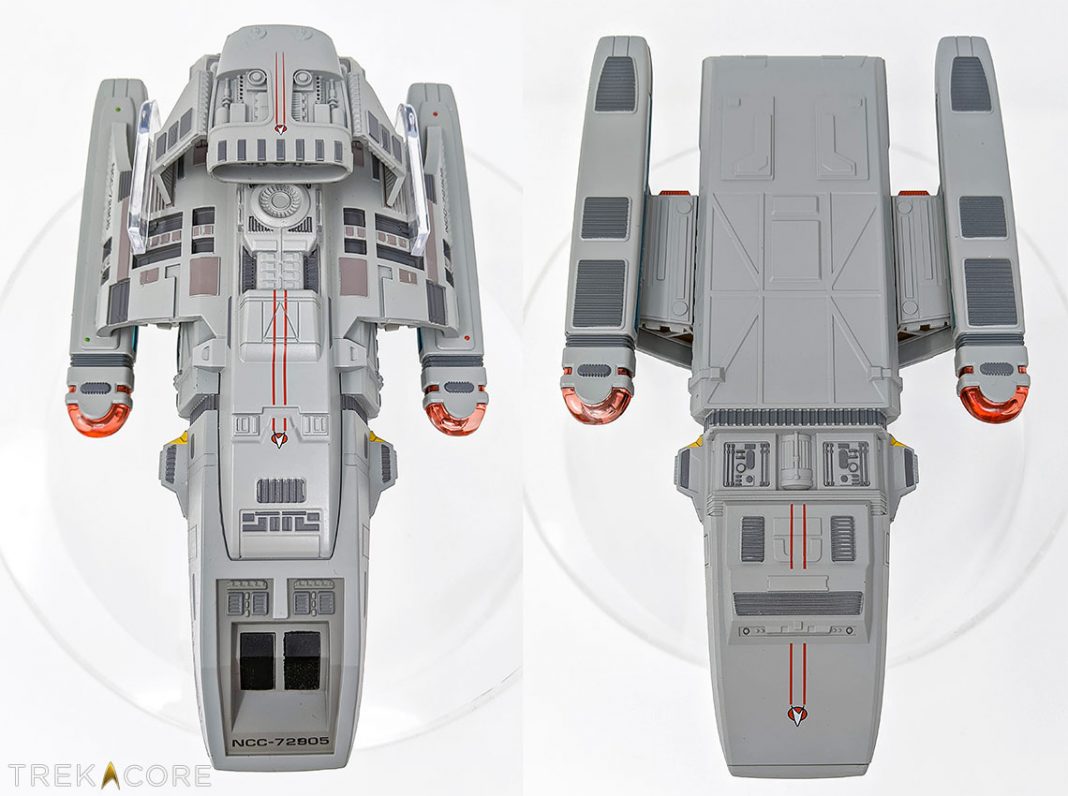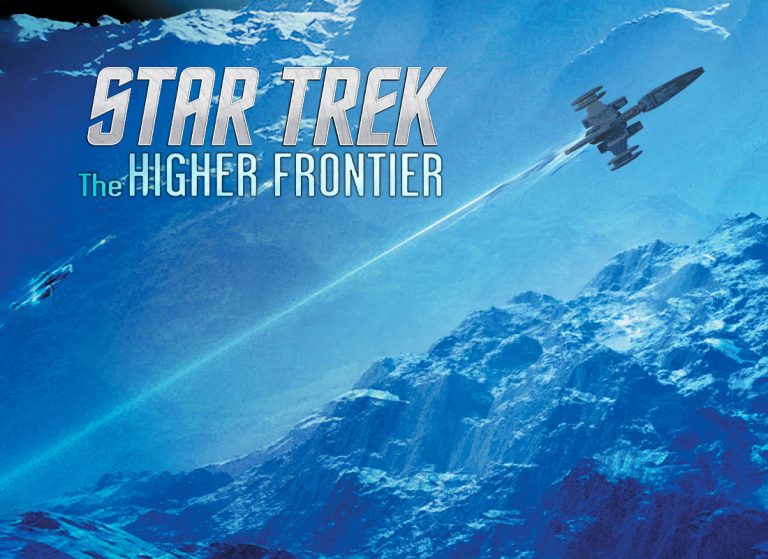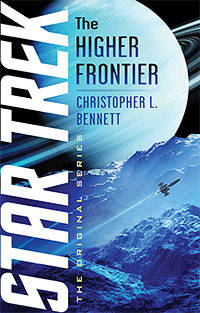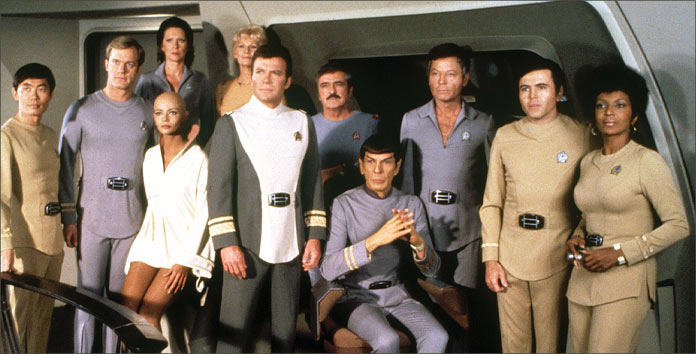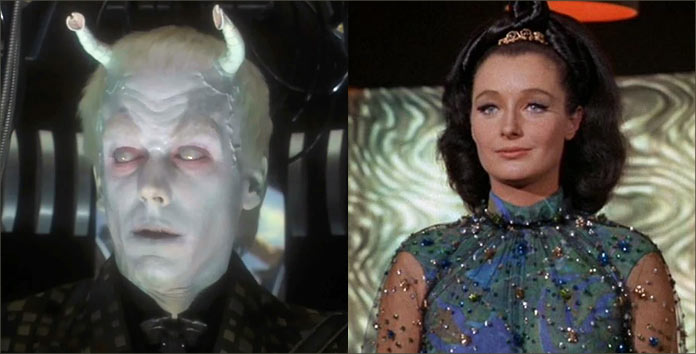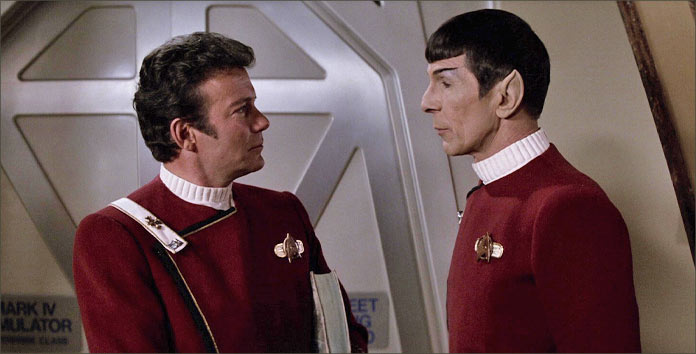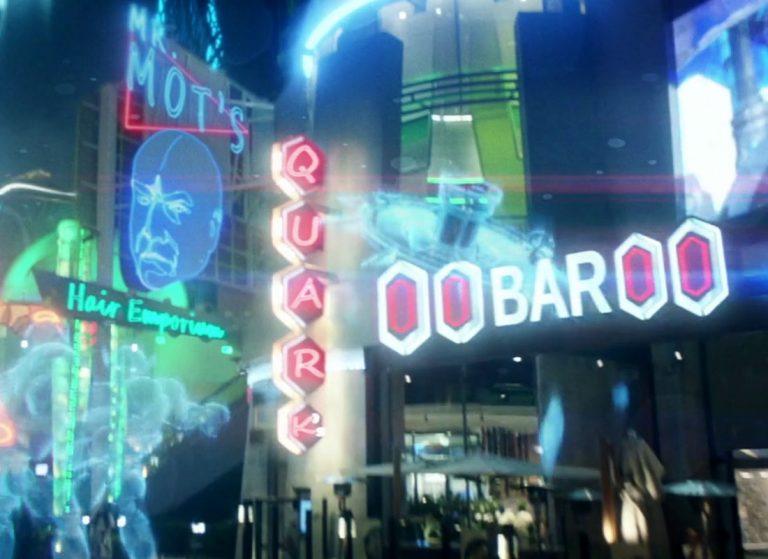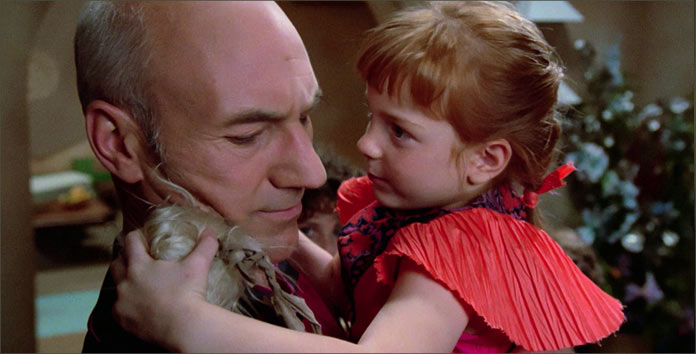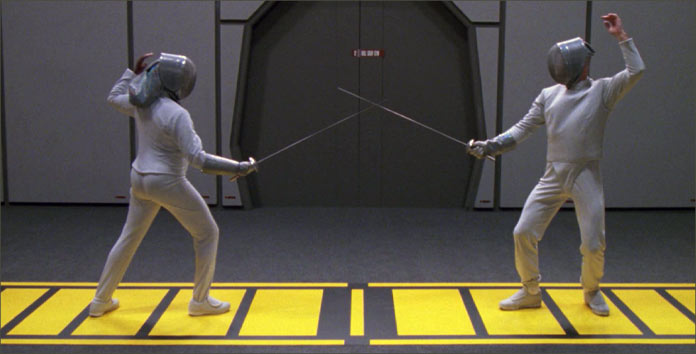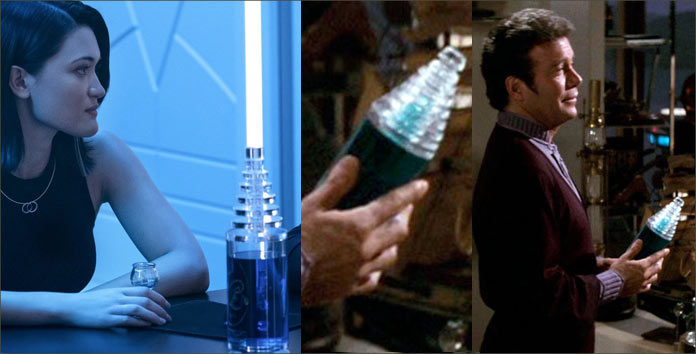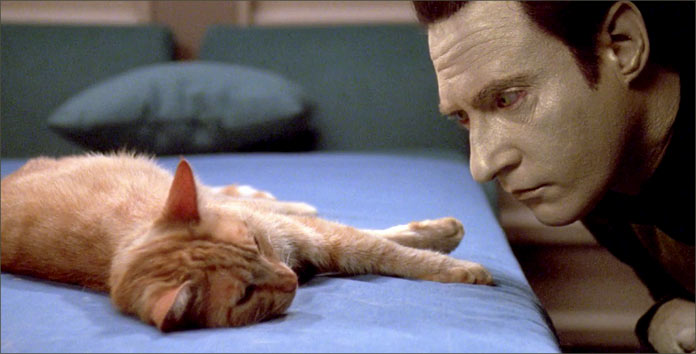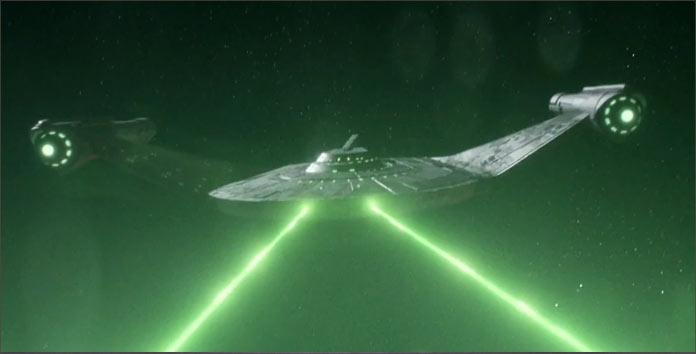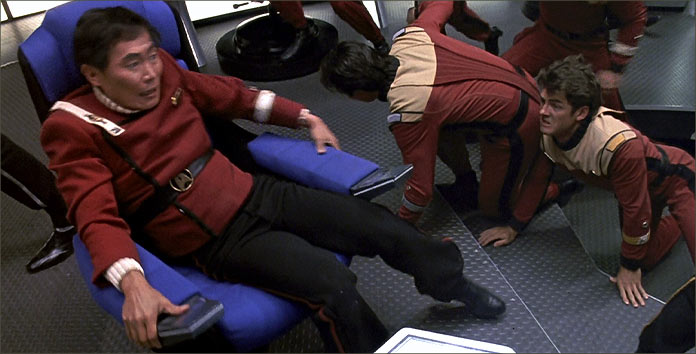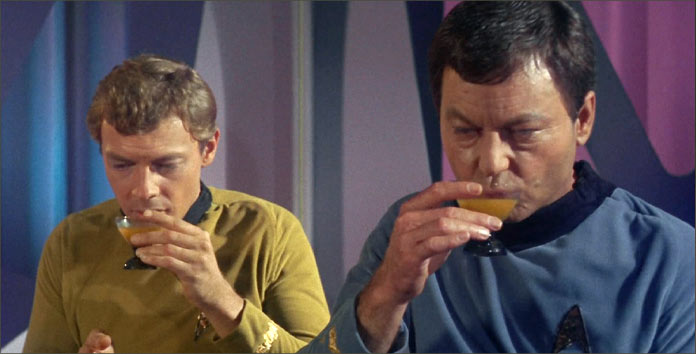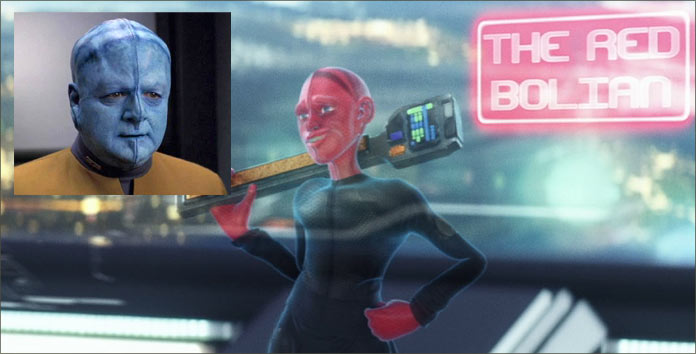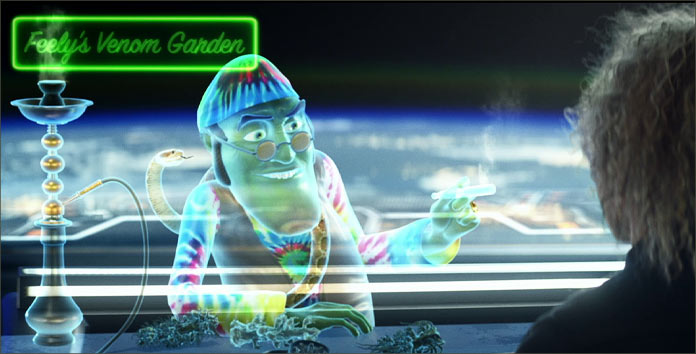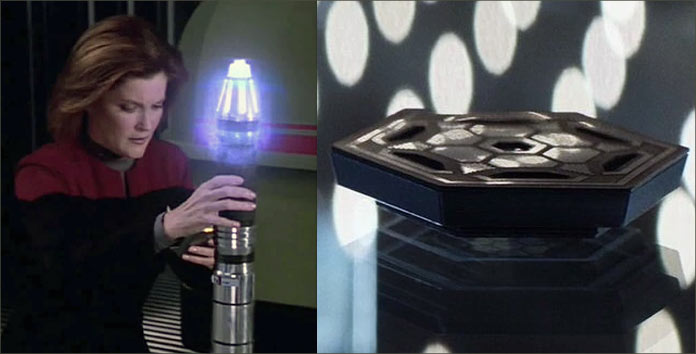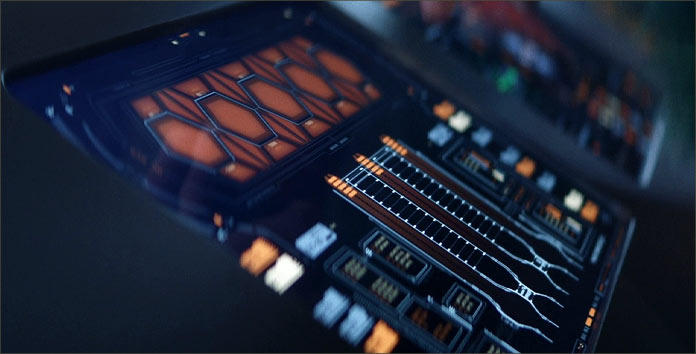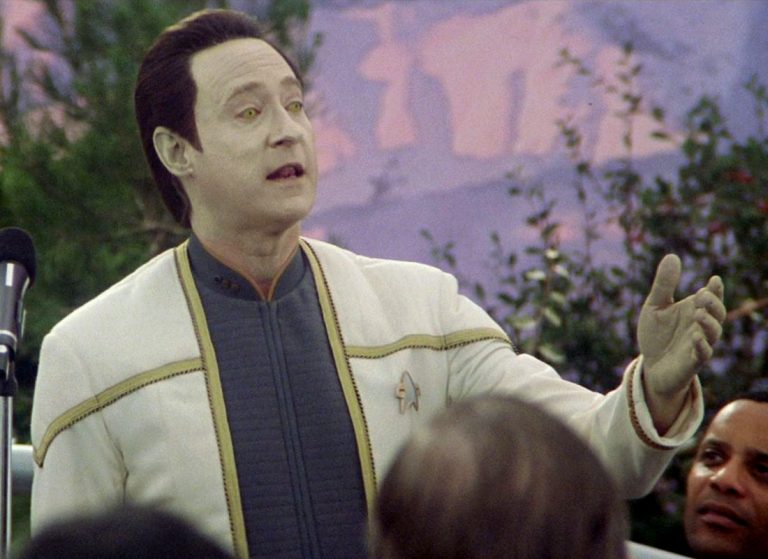with Jörg Hillebrand
The first season of Star Trek: Picard has concluded, and now that the dust has settled, our Canon Connections series is back to take a walk through all ten episodes of the first year’s adventure to find all the callbacks, references, and sly winks to Star Trek‘s past.
We start today with a look at the opening trilogy of episodes — “Remembrance,” “Maps and Legends,” and “The End is the Beginning” — that set retired admiral Jean-Luc Picard back into space aboard La Sirena and on his way through this new set of stories.
Blue Skies

“Remembrance” – The pilot opens with a flash of nostalgia. As “Blue Skies” plays – the wedding song that Data sung for Riker and Troi at their wedding in ‘Star Trek: Nemesis’ and that played out the movie’s final seconds – we open on an approaching Enterprise-D (last seen in “These Are the Voyages.”)
As we push into Ten Forward (also last seen in the same episode,) Picard and Data (in ‘Star Trek: First Contact’ uniform) are playing poker (calling back to many TNG episodes.) And if that wasn’t enough, the Picard production crew sourced several of the Bodum tea cups that were made famous as Picard’s tea cups during the run of T’he Next Generation.’
Chateau Picard

“Remembrance” – Many scenes in these opening episodes were set at Chateau Picard. Though the filming location was new (for ‘Picard’ production shot at Sunstone Winery,) this is the first time we have revisited the Chateau since ‘The Next Generation’ finale “All Good Things…”
Recurring Alien Races
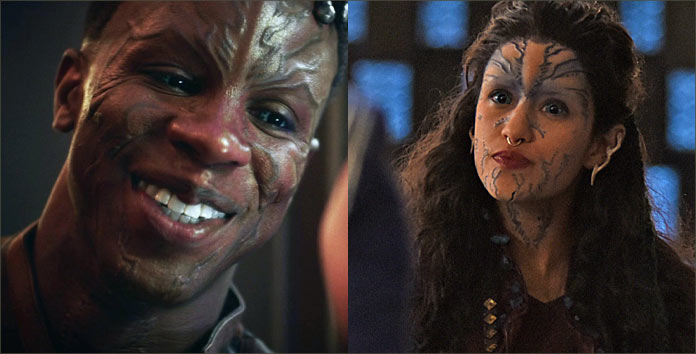
“Remembrance” – Dahj’s boyfriend is Xahean. The only Xahean seen on screen before ‘Remembrance’ was Me Hani Ika Hali Ka Po (Po) from the Short Trek premiere ‘Runaway.’ Meanwhile, the FNN news crew includes a Bajoran makeup artist, a Trill, and a Tellarite.
Romulan Knife
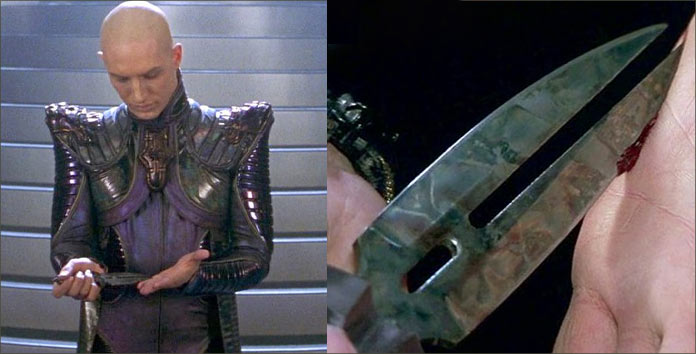
“Remembrance” – The Romulan knife used in the attack on Dahj in her Boston apartment is the same “Gil Hibben Double Shadow” knife that was used by the Romulan characters, including Praetor Shinzon, during ‘Star Trek: Nemesis.’
Familiar Photos
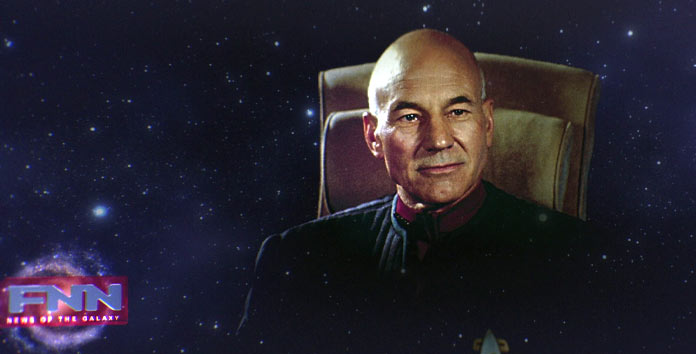
“Remembrance” – Picard’s interview with the Federation News Network opens with a series of still images of the character, including a season four publicity photo from ‘The Next Generation’, a still from the TNG episode “Sins of the Father,” and images from ‘Star Trek: First Contact’ and ‘Star Trek: Insurrection.’
Dreaming of ‘The Next Generation’
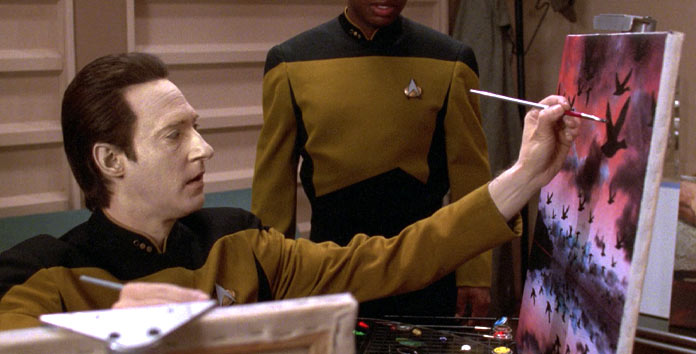
“Remembrance” – During Picard’s second dream of the episode, he dreams of Data painting (a frequent hobby of the android during the run of ‘The Next Generation’), and pictures himself and Data wearing their uniforms from TNG.
Inside Starfleet’s Archives

“Remembrance” – Following his dream, Picard visits his storage unit at the Starfleet Archives to investigate a painting gifted to him by Data.
Memorabilia from Picard’s life line the walls of the storage room, including the Captain Picard Day banner (TNG: “The Pegasus,”) models of the USS Stargazer, USS Enterprise-D, USS Enterprise-E, and the Enterprise-E’s captain’s yacht, a number of awards (which include insignia and symbology from many of the Federation’s major races,) a Klingon bat’leth and D’k tagh’, and a book of Shakespeare.
The book, which matches that which was on display in Picard’s ready room through most of the run of ‘The Next Generation,’ is turned to the page in All’s Well that Ends Well which includes the quote Picard gives Number One earlier in the episode “There’s no legacy so rich as honesty.”
Picard’s Personnel Records
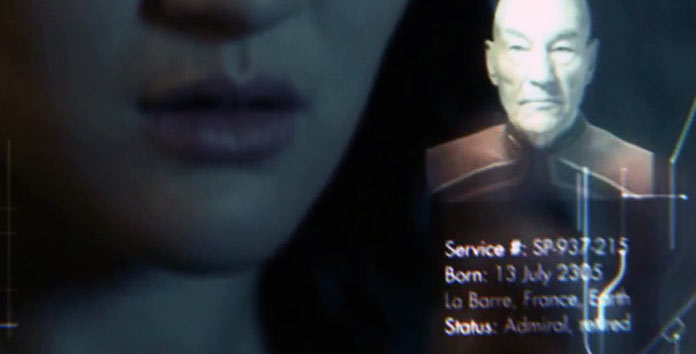
“Remembrance” – When Dahj reaches out to her mother, she is implored to “find Picard,” which appears to be some kind of activation phrase for Dahj’s android abilities. Activating her computer interface, she is able to locate Jean-Luc Picard’s personnel file.
The file includes his date of birth – July 13, 2305 – which was first referenced in the TNG episode “Conundrum,” as well as his service number – SP-937-215 – which was heard in dialogue in the TNG episode “Chain of Command.”
Starfleet Symbols
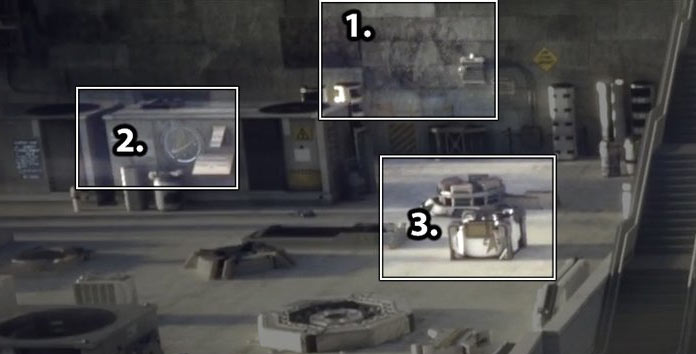
“Remembrance” – When Dahj confronts Picard, he reveals his belief that she is an android, and that the Romulan attack served as a “positronic alarm bell.” Data’s brain was positronic. As she and Picard rush up to the roof of the Starfleet Archives, multiple Starfleet symbols can be seen to indicate that the facility has been in use for several generations.
The Starfleet symbols include Discovery-era Starfleet Command (#2), two 23rd century Starfleet Command icons (from ‘Star Trek (2009)’ and ‘Star Trek Beyond’) (#1), and the familiar Starfleet delta from latter seasons of ‘Deep Space Nine’ and all of ‘Voyager’ (#3).
Daystrom Institute
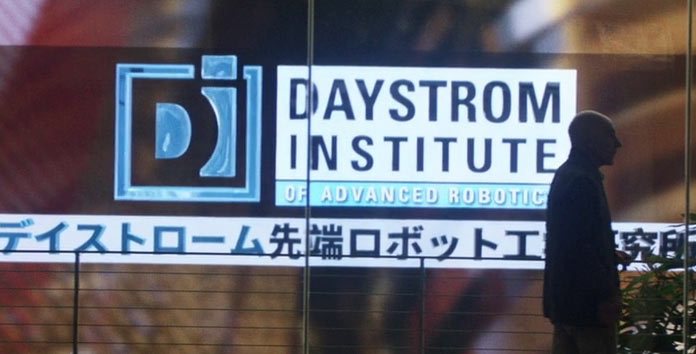
“Remembrance” – In ‘Picard’ we get our first look at the Daystrom Institute, which had been referenced multiple times previously in ‘Star Trek’ (beginning with ‘The Next Generation’ and named after Richard Daystrom who appeared in The Original Series episode “The Ultimate Computer.”)
During the scenes at the institute, we get our first look at the Data prototype android B-4 since his appearance in ‘Star Trek: Nemesis,’ and the first mention of Doctor Bruce Maddox, the Starfleet cyberneticist who wanted to disassemble Data in the TNG episode “The Measure of a Man” and was last mentioned in “Data’s Day.”
Revised Romulan Logo

“Remembrance” – This episode gives us our first look at a Borg Cube since the ‘Star Trek: Voyager’ finale “Endgame.”
As the Romulan ship enters the cube, we get a look at the new Romulan logo, which is heavily inspired by previous Romulan logo designs but without the two worlds represented or Romulus and Remus, due to the destruction of both worlds during the Romulan supernova.
Mars Attack

“Maps and Legends” – The episode opens with the synth attack on Mars and the Utopia Planita Shipyards (seen briefly in the Short Trek “Children of Mars” and previously seen in the Voyager episode “Relativity.”) The date is established as First Contact Day, the day in which Zefram Cochrane made his first warp flight and made contact with the Vulcans (as seen in ‘Star Trek: First Contact,’ with the holiday previously mentioned in the Voyager episode “Homestead”)
The shipyard workers are also seen holding large PADDs, much more reminiscent of designs from ‘The Next Generation’ than anything seen so far in Picard.
Diagnosis Confirmed
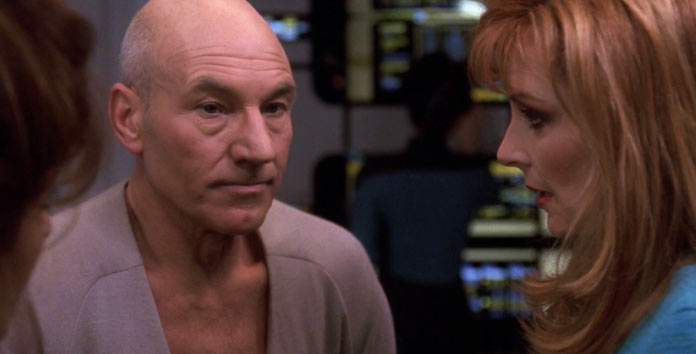
“Maps and Legends” – Picard is visited by Dr. Benayoun, a colleague from the Stargazer (the first reference spoken out loud to Picard’s first command since ‘The Next Generation.’) Dr. Benayoun informs Picard that the “abnormality in your parietal lobe” has progressed, and has likely caused one of a number of neurological conditions.
Dr. Crusher diagnosed Picard with the abnormality in the TNG finale “All Good Things…” as a potential precursor to the Irumodic Syndrome he suffered in the alternate future he experienced in that episode.
Starship History
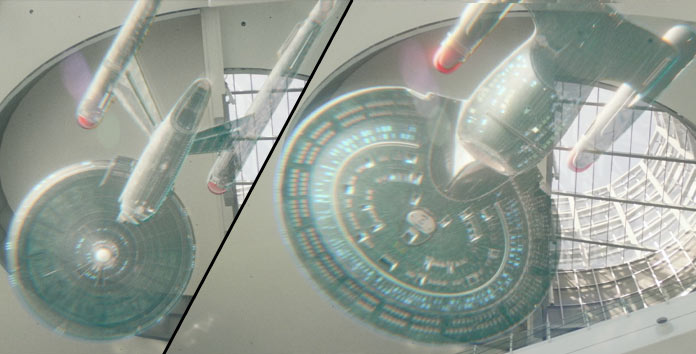
“Maps and Legends” – As Picard enters Starfleet Command, we see holograms above him of famous Starfleet ships, including a Galaxy-class starship and a Constitution-class starship in the ‘Discovery’-era configuration.
Vulcan Iconography
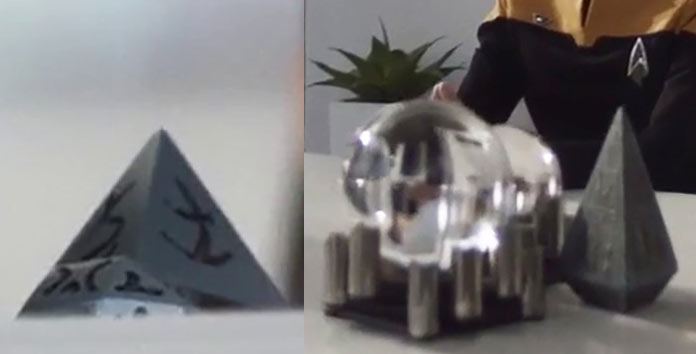
“Maps and Legends” – Commodore Oh’s office at Starfleet Command is about as Vulcan as they come. In addition to the wooden box with the IDIC symbol made famous throughout franchise history, Oh also has a miniature replica of the Kir’Shara on her desk (from the Vulcan trilogy in ‘Enterprise’), a set of Vulcan dice which Spock describes in the TNG episode “Unification, Part II” as “the syllabic nucleus of the Vulcan language.”
In the later scene with Lt. Rizzo, we also see that Oh has a set of Vulcan bells matching those in Spock’s quarters in The Original Series and ‘Discovery.’
Vasquez Rocks
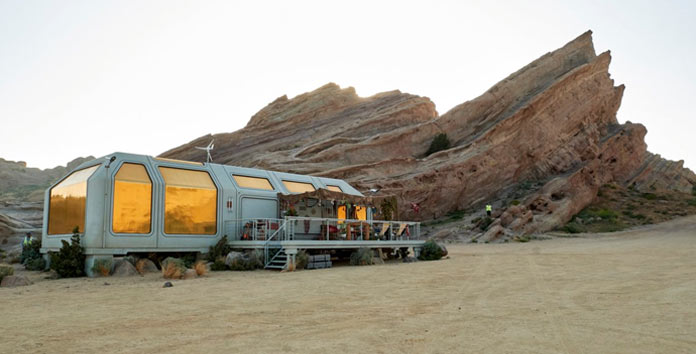
“Maps and Legends” — Picard meets Raffi at her home at Vasquez Rocks. Though this is the first time the rocks have appeared in ‘Star Trek’ as itself, the location was a popular filming location for every iteration of ‘Star Trek’ going back to The Original Series episode “Arena.”
Shipyards
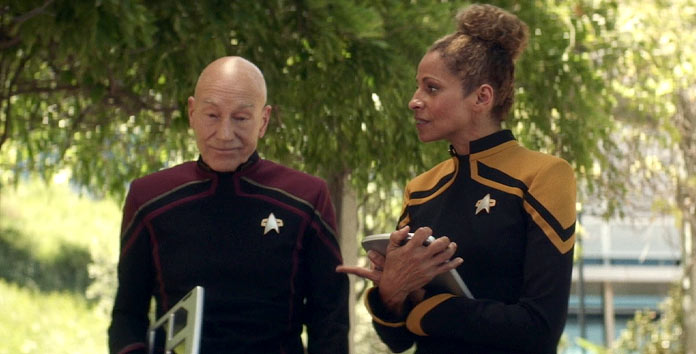
“The End is the Beginning” – In the opening flashback between Picard and Raffi as they try to salvage the Romulan evacuation following the attack on Mars, Raffi mentions the shipyards at Beta Antares and Eridani A.
The Beta Antares Shipyards were the construction yard for the USS Prometheus (VGR: “Message in a Bottle”) and the 40 Eridani A shipyard was the original construction yard for many of the Nebula class starships, including the USS Phoenix. The Eridani A shipyards are located in the Vulcan star system.
Operatic Interlude

“The End is the Beginning” – As Dr. Jurati enjoys a break outdoors, she is listening to Kasselian Opera. The opera she listens to was a favorite of Dr. Paul Stamets, and was previously heard in the ‘Discovery’ episode “Past is Prologue.”
Saurian Brandy

“The End is the Beginning” – Among Raffi’s clutter include a Saurian brandy bottle, as seen in multiple The Original Series episodes including “The Enemy Within.” She also has a Danish kluk kluk bottle; a similar variant on the bottle appeared in The Original Series episode “By Any Other Name.”
Romulan Ridges Explained
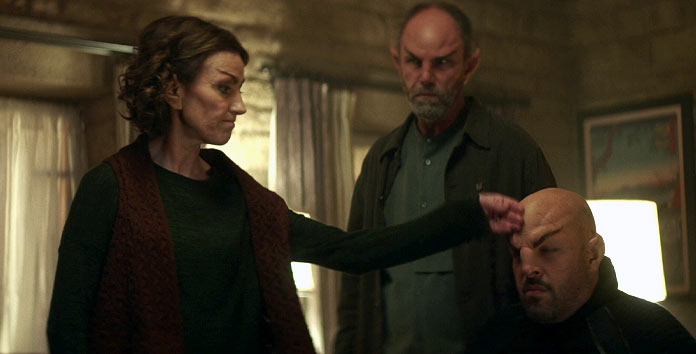
“The End is the Beginning” – After the attack on Picard’s home, Laris and Zhaban capture one of the Zhat Vash intruders for questioning. Laris labels him a “stubborn northerner,” as she taps his forehead, indicating that the forehead ridge variations we have seen between Romulans of The Original Series and The Next Generation-era are geographic in nature.
[td_smart_list_end]

Our Star Trek: Picard Canon Connections will continue this week as we look at the fourth and fifth episodes of the season: “Absolute Candor” and “Stardust City Rag.”
![]()

